Forums
- Forums
- Axis And Allies Forum
- General Discussion
- Aviation News
Aviation News
Post a reply
- Go to Previous topic
- Go to Next topic
- Go to Welcome
- Go to Introduce Yourself
- Go to General Discussion
- Go to Screenshots, Images and Videos
- Go to Off topic
- Go to Works in Progress
- Go to Skinning Tips / Tutorials
- Go to Skin Requests
- Go to IJAAF Library
- Go to Luftwaffe Library
- Go to RAF Library
- Go to USAAF / USN Library
- Go to Misc Library
- Go to The Ops Room
- Go to Made in Germany
- Go to Campaigns and Missions
- Go to Works in Progress
- Go to Juri's Air-Raid Shelter
- Go to Campaigns and Missions
- Go to Works in Progress
- Go to Skinpacks
- Go to External Projects Discussion
- Go to Books & Resources
-
 Main AdminARLINGTON, Va. (AFNS) --
Main AdminARLINGTON, Va. (AFNS) --
In a major step toward a new era of airpower, the Department of the Air Force reached a key development milestone in its Collaborative Combat Aircraft (CCA) program, with one of its prototype platforms taking flight in less than two years from program launch — signaling a paradigm shift in the way the Air Force acquires new weapon systems.
The aircraft, designated YFQ-42A and developed in partnership with General Atomics, flew at a California test location, contributing valuable data to continued evaluations of platform airworthiness, flight autonomy and mission system integration. This supports the Department’s broader initiative to field large quantities of modular, affordable, and operationally relevant uncrewed aircraft designed to fly alongside crewed fifth and sixth-generation aircraft.
“This milestone showcases what’s possible when innovative acquisition meets motivated industry,” said Secretary of the Air Force Troy Meink. “In record time, CCA went from concept to flight — proving we can deliver combat capability at speed when we clear barriers and align around the warfighter.”
CCA is a key component of the Next Generation Air Dominance Family of Systems and reflects a new model for software-defined, modular airpower. The program is structured to leverage development from multiple vendor development solutions, reduce risk through competition, and integrate open-system architectures that allow the continuous iteration of autonomy and mission systems capabilities and delivery of enhanced capability at the speed of relevance.
“This is More Air Force in action,” said Air Force Chief of Staff Gen. David Allvin. “We’re not just moving fast — we’re learning fast. CCA will help us rethink the battlespace, extend reach, flexibility and lethality in combat operations, and optimize warfighter performance through human-machine teaming.”
An aircraft takes off from a runway.
A YFQ-42A Collaborative Combat Aircraft takes off during flight testing at a California test location. The aircraft was developed in partnership with General Atomics as part of the Air Force’s effort to accelerate delivery of affordable, semi-autonomous aircraft.
To deliver CCA to the warfighter with unprecedented speed, the program is executing a multi-faceted learning campaign. This includes rigorous vendor-led developmental testing, independent evaluations at Edwards Air Force Base, California, and operational assessments by the Experimental Operations Unit at Nellis AFB, Nevada. This integrated approach ensures the force is prepared to seamlessly field and employ this capability-enhancing readiness and enabling rapid transition of combat power upon delivery of the first production aircraft.
The department previously selected Anduril Industries and General Atomics to develop production-representative prototypes under the CCA program. A competitive Increment 1 production decision is expected in fiscal year 2026.
(Courtesy photos)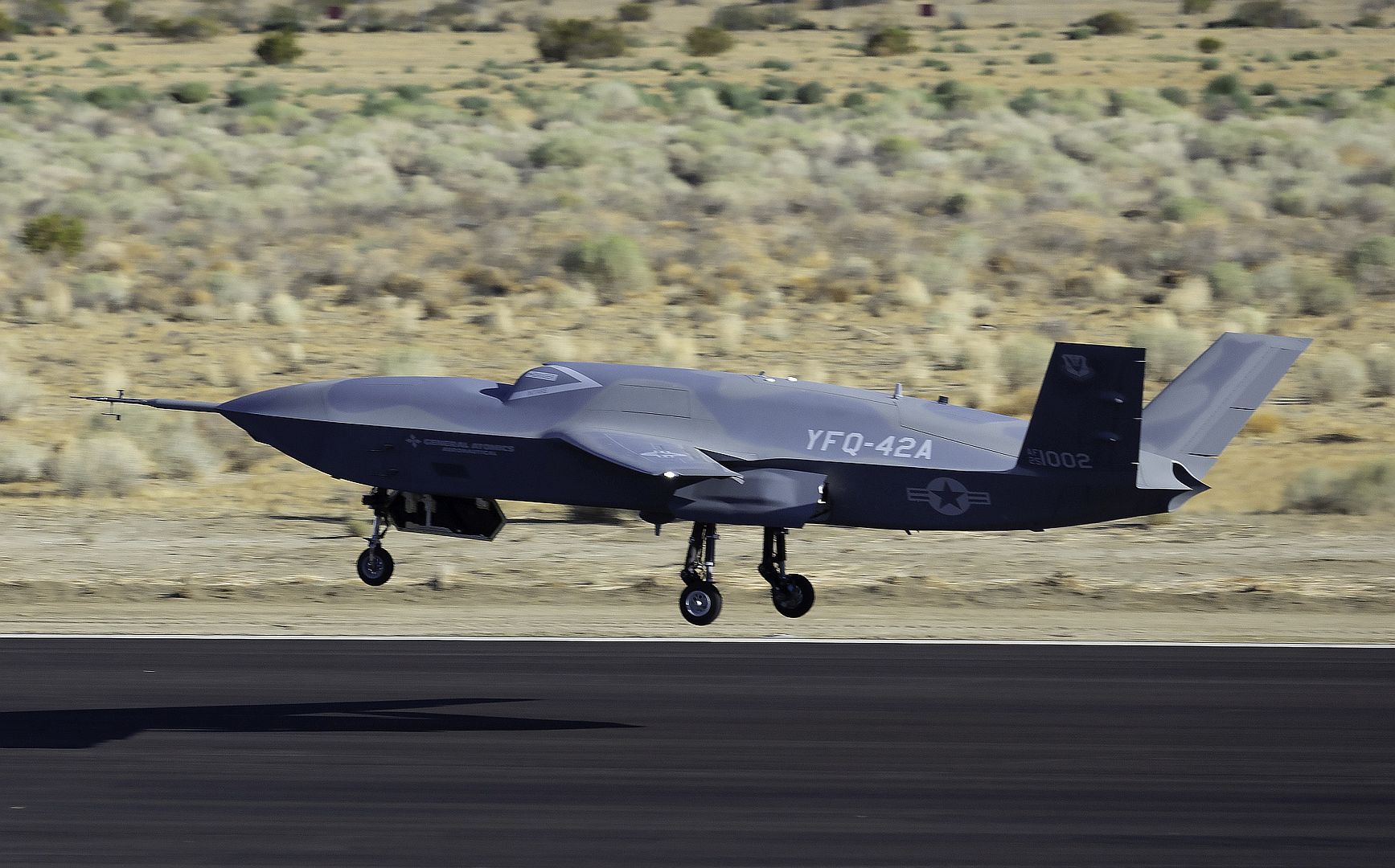
A U.S. Marine Corps heavy-lift Sikorsky CH-53K King Stallion helicopter with Marine Heavy Helicopter Squadron 461, Marine Aircraft Group 29, 2nd Marine Aircraft Wing, off-loads a F-35B Lightning II after a long-range external lift operation at Marine Corps Air Station Beaufort, South Carolina, Aug. 27, 2025. The F-35B Lighting II aircraft, known as BF-1, was the first F-35B Lightning II variant ever built, ushering in a new era for Marine Corps Aviation. (U.S. Marine Corps photo by Lance Cpl. Isabella Renaud)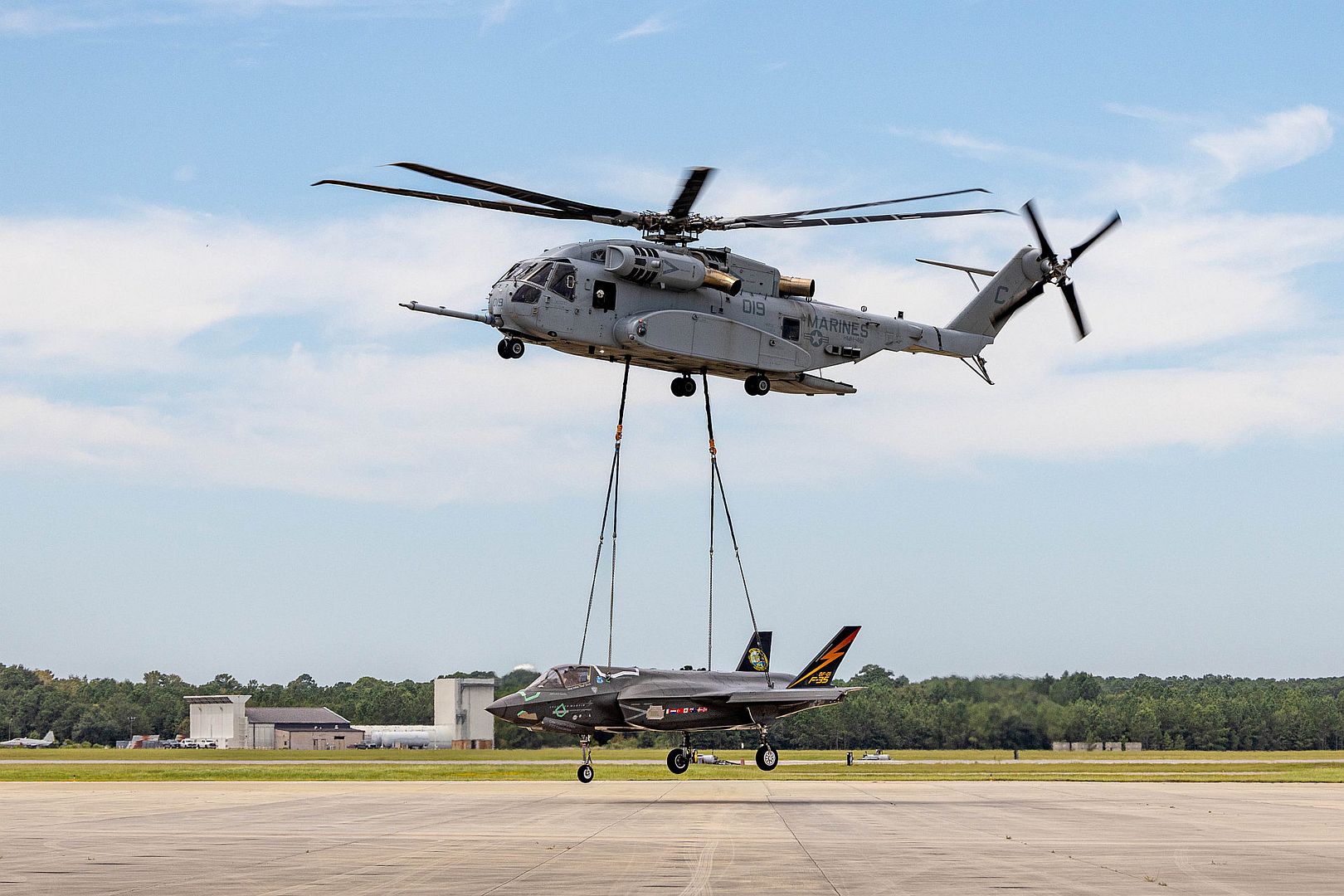
U.S. Marines with Marine Corp Air Station Beaufort prepare the F-35B Lightning II aircraft known as BF-1 to be towed to its static display position at MCAS Beaufort, South Carolina, Aug. 27, 2025. The F-35B Lighting II aircraft, known as BF-1, was the first F-35B Lightning II variant ever built, ushering in a new era for Marine Corps Aviation. (U.S. Marine Corps photo by Lance Cpl. Isabella Renaud)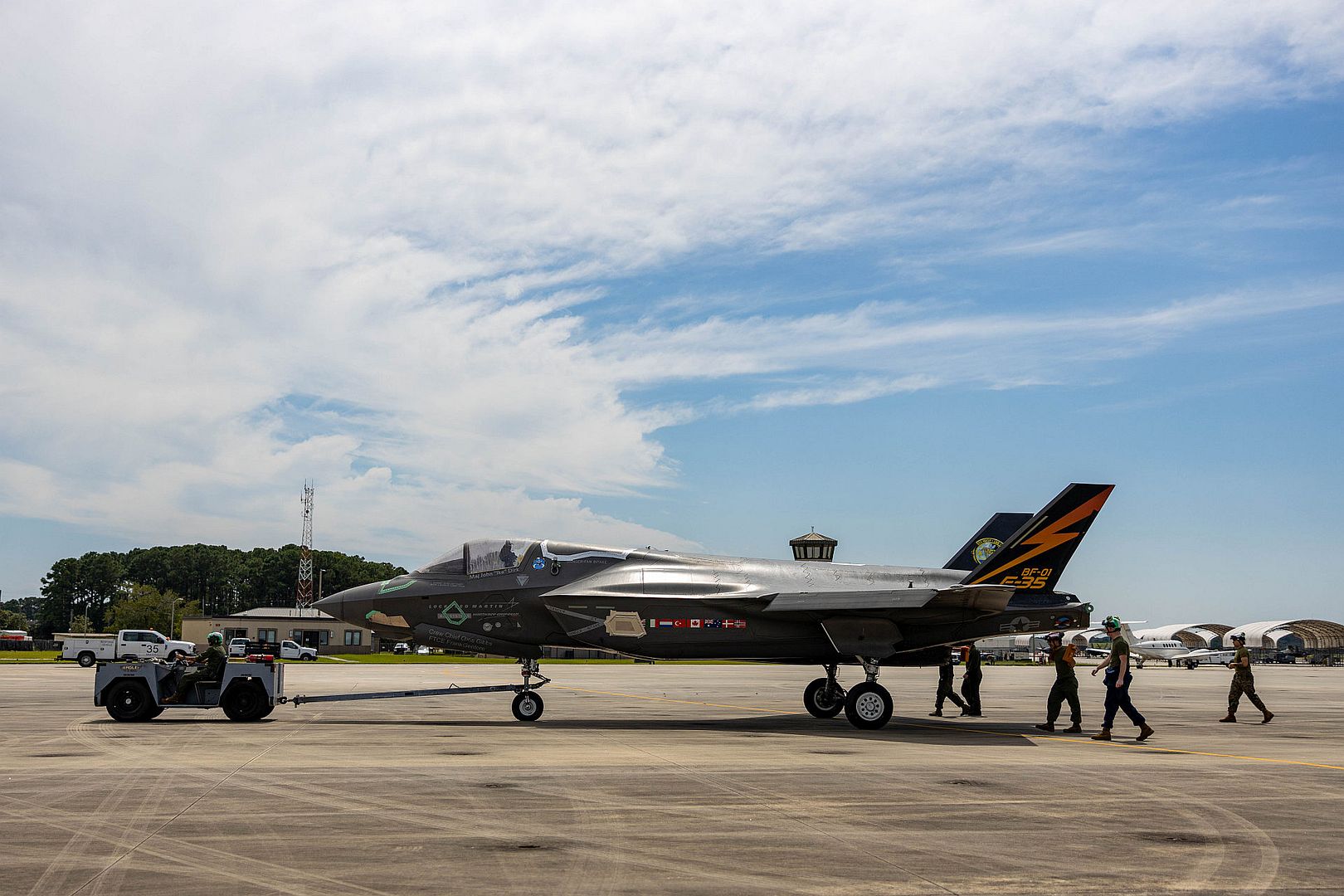
PACIFIC OCEAN (Aug. 26, 2025) An EA-18G Growler, attached to Electronic Attack Squadron (VAQ) 133, prepares to launch from the flight deck of the Nimitz-class aircraft carrier USS Abraham Lincoln (CVN 72). Abraham Lincoln, flagship of Carrier Strike Group Three, is underway conducting routine training operations in the U.S. 3rd Fleet area of operations. As an integral part of U.S. Pacific Fleet, Commander, U.S. 3rd Fleet operates naval forces in the Indo-Pacific and provides the realistic and relevant training to ensure the readiness necessary to execute the U.S. Navy’s timeless role across the full spectrum of military operations. (U.S. Navy photo by Mass Communication Specialist 2nd Class Valerie Morrison)
The U.S. Navy Blue Angels perform an aerial demonstration over Rickenbacker International Airport during the Columbus Air Show, Aug. 24, 2025. This year’s event featured more than 20 military and civilian planes, including a KC-135 Stratotanker from the 121st Air Refueling Wing, which served as the base of operations for military aircraft participating in the show. (U.S. Air National Guard photo by Tech. Sgt. Mikayla Gibbs)
The Osprey MK-III waits to take off Aug. 15, 2025 at Eglin Air Force Base, Florida. The unmanned aerial system made its first flight test with a third-party developer’s alternative navigation software connected. The testing examines the feasibility of providing an aircraft or weapon with its own internal GPS estimation tools instead of using external sources. (U.S. Air Force photos by Samuel King Jr.)

An F-15E Strike Eagle takes-off for a training sortie at Seymour Johnson Air Force Base, N.C., Aug. 22, 2025. The mission generation supported a Commander Inspection Program for the Generate, Employ and Sustain exercise, designed to prepare Airmen for deployment and global fighter aircraft operations in contested environments. (U.S. Air Force photo by Master Sgt. Alexandre Montes)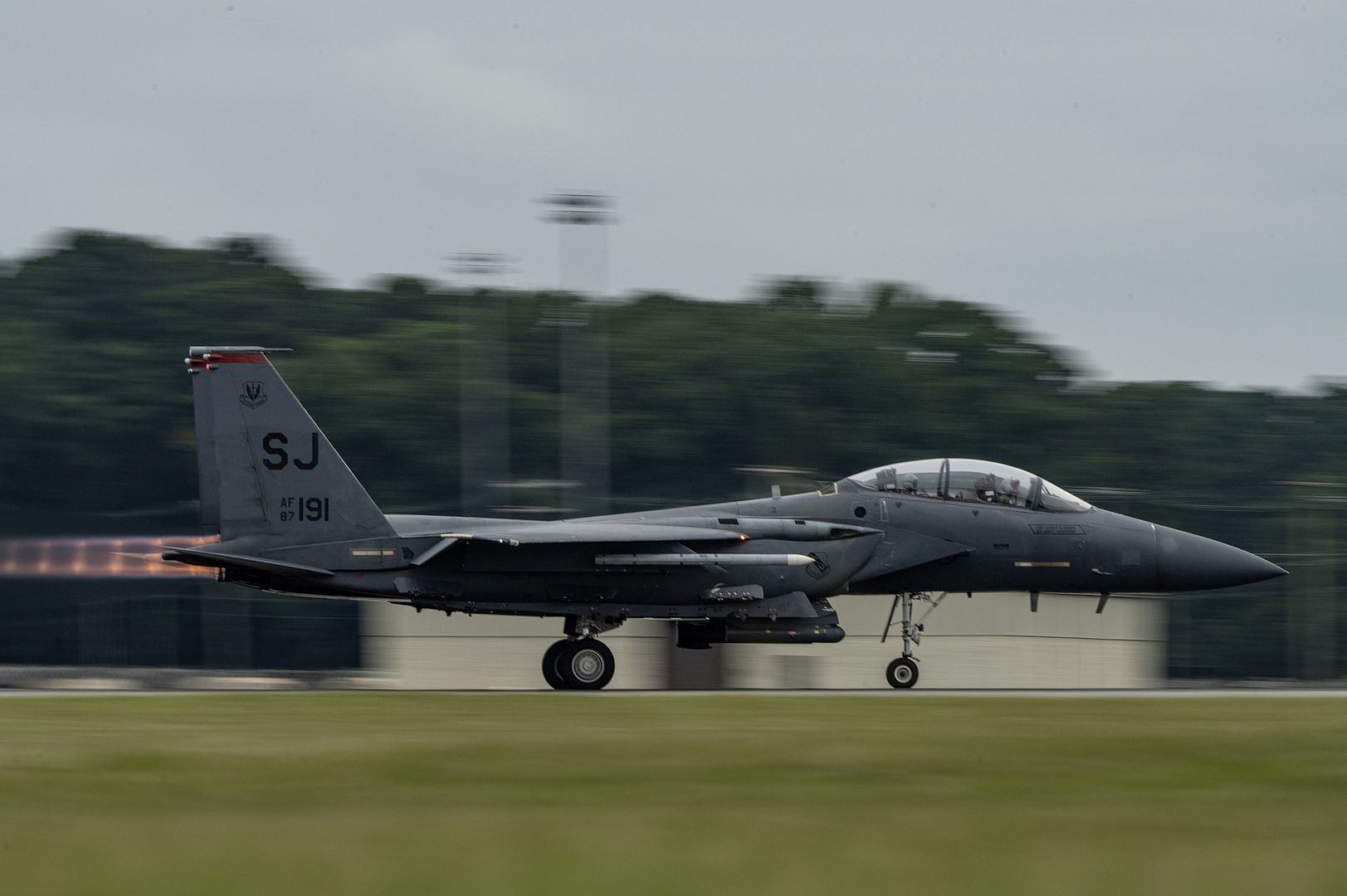
Executing Operation NOBLE DEFENDER, North American Aerospace Defense Command F-15 fighter aircraft from the Massachusetts Air National Guard’s 104th Fighter Wing follow behind a Pennsylvania Air National Guard KC-135 Stratotanker from the 171st Air Refueling Wing during Global Guardian, Aug. 22, 2025. Global Guardian is an opportunity for NORAD to maintain readiness and validates tactics, techniques, and procedures. This iteration’s focus was defending the eastern approach of North America from simulated cruise missile threats. (U.S. Air National Guard photo by Senior Master Sgt. Bryan Hoover.)
Saab has revealed Nimbrix, its first ever dedicated Counter-Unmanned Aerial System (C-UAS) missile. The missile is developed to counter the increasing threat from small drones on the battlefield.
The fire-and-forget missile is being rapidly developed at Saab with the aim to deliver a system featuring a target seeker, a hard-kill warhead, and a small footprint – all at a low cost. The range will be up to 5 km with an active seeker to track its target. Its warhead can effectively engage and defeat UAS swarms using an air-burst mode.
“Nimbrix is our answer to the unmanned aerial threats which have escalated in the last few years. It is cost-effective which is critical given the proliferation of UASs on the battlefield. Nimbrix benefits from our long experience of air defence, together with an agile way of responding to new needs,” says Stefan Öberg, head of Saab’s business unit Missile Systems.
The missile operates as a ground-based system and can be operated independently or as part of a larger air defence system. With flexible mounting options to fit different customer requirements, Nimbrix can be mounted on various vehicles or in fixed configurations. The cost-effective nature of the missile contributes to maximising deployed numbers to generate sufficient air defence coverage.
Melbourne, Florida, August 28, 2025 – Embraer (NYSE: ERJ; B3: EMBR3) today announced it has surpassed 2,000 business jet deliveries, marking a defining moment in the company’s history. The milestone aircraft is a Praetor 500, delivered to an undisclosed corporate flight department during a ceremony at Embraer’s Executive Jets state-of-the-art Global Customer Center in Melbourne, Florida.
The Praetor 500 is the most disruptive and technologically advanced business jet in its class, delivering industry-leading range, speed and performance. It is the fastest and furthest-flying midsize jet, capable of true nonstop North America corner-to-corner flights, such as Miami to Seattle or Los Angeles to New York. The aircraft offers an impressive intercontinental range of 3,340 nautical miles (6,186 km) with four passengers and NBAA IFR Reserves.
“Delivering our 2,000th business jet is more than just a milestone number. It is a powerful reflection of the strength of our product portfolio, our unwavering commitment to our customers and the dedication of our employees who take pride in building every aircraft,” said Michael Amalfitano, President & CEO of Embraer Executive Jets. “This milestone cements Embraer’s position as a global leader in business aviation and serves as a testament to the popularity of our Praetor family of jets, especially among major corporate flight departments. Both the Praetor 500 and Praetor 600 have become aircraft of choice for their disruptive technology and unmatched performance, demonstrating the confidence these corporations place in Embraer.”
In addition to highlighting company growth, the delivery underscores the Praetor 500 and Praetor 600’s rising appeal among corporate flight departments, which value the family’s distinct combination of capabilities. The aircraft offer technology typically found in larger jets, such as full fly-by-wire with active turbulence reduction, while delivering short runway performance comparable to smaller aircraft. Complemented by best-in-class range, both aircraft provide passengers with access to more destinations around the world, without compromise.
Embraer’s executive aviation business has accumulated an average compound growth rate of 14% since 2002, when the first executive jet model was delivered. In 2024 alone, nearly one in every three small and midsize cabin jets delivered was an Embraer Phenom or Praetor.
Royal Navy flagship HMS Prince of Wales has arrived in Tokyo for a historic visit to deepen bonds between Japan and the UK.
The ship leads the UK Carrier Strike Group into Japan’s capital for a major port stop which will include hosting dignitaries, politicians and defence seniors, and opening to the public for tours before hosting an international summit, the Pacific Future Forum.
Prince of Wales arrived in Tokyo to much fanfare, with sailors lining the flight deck and people waving them in from bridges and viewpoints.
“After a brief but busy period of planned maintenance in Yokosuka, it’s a huge privilege to bring the Royal Navy fleet flagship into the centre of Tokyo,” said Captain Will Blackett, Commanding Officer of HMS Prince of Wales.
“Before arriving to Japan, we exercised with the Japanese Maritime Self-Defense Force at sea. It has been great to see what we can do together and our commitment to working with our partners in the Indo-Pacific region
“Japan has been an incredible place to visit, our sailors have been so welcomed here and have explored all across the country. The Tokyo night skyline, with HMS Prince of Wales in it, is going to be really special.”
UK Secretary of State for Defence, John Healey MP, his Japanese counterpart Minister of Defence, Gen Nakatani and the head of the Royal Navy, First Sea Lord General Sir Gwyn Jenkins welcomed the ship in as it arrived in Tokyo.
The ship’s company of HMS Prince of Wales and her escort ships have just completed a period of maintenance and rest in nearby Yokosuka.
Those deployed as part of the Carrier Strike Group have climbed Mount Fuji and explored nearby, including visits to Kamakura and Shibuya, along with sampling local food and cultural experiences.
While in Tokyo, the flagship of the Carrier Strike Group will host the Pacific Future Forum, bringing together defence, security, and industry leaders to discuss shared security challenges, from future technology to economic security.
There will also be a Defence and Security Industry Day that will showcase British defence capabilities and innovation, delivering on the Government’s Plan for Change.
After departing Tokyo HMS Prince of Wales will reunite with her escorts including HMS Richmond and RFA Tidespring which are visiting Busan in the Republic of Korea.
(Photos courtesy of the RN)
-
 Main AdminAn F/A-18E Super Hornet, attached to Strike Fighter Squadron (VFA) 195 readies for takeoff on the flight deck of Nimitz-class aircraft carrier USS George Washington (CVN 73) while underway in the Pacific Ocean, Aug. 27, 2025. George Washington is the U.S. Navy’s premier forward-deployed aircraft carrier, a long-standing symbol of the United States’ commitment to maintaining a free and open Indo-Pacific region, while operating alongside allies and partners across the U.S. Navy’s largest numbered fleet. (U.S. Navy photo by Mass Communication Specialist 3rd Class Jack Barnell)
Main AdminAn F/A-18E Super Hornet, attached to Strike Fighter Squadron (VFA) 195 readies for takeoff on the flight deck of Nimitz-class aircraft carrier USS George Washington (CVN 73) while underway in the Pacific Ocean, Aug. 27, 2025. George Washington is the U.S. Navy’s premier forward-deployed aircraft carrier, a long-standing symbol of the United States’ commitment to maintaining a free and open Indo-Pacific region, while operating alongside allies and partners across the U.S. Navy’s largest numbered fleet. (U.S. Navy photo by Mass Communication Specialist 3rd Class Jack Barnell)
A Carrier Air Wing 8 F/A-18E Super Hornet, attached to Strike Fighter Squadron 31 and deployed aboard the world’s largest aircraft carrier, USS Gerald R. Ford (CVN 78), lands at the Royal Norwegian Air Force's Ørland Air Base, Norway, during High North operations, Aug. 27, 2025. Gerald R. Ford, a first-in-class aircraft carrier and deployed flagship of Carrier Strike Group Twelve, is on a scheduled deployment in the U.S. 6th Fleet area of operations to support the warfighting effectiveness, lethality and readiness of U.S. Naval Forces Europe-Africa, and defend U.S., Allied and partner interests in the region.
(Courtesy photo)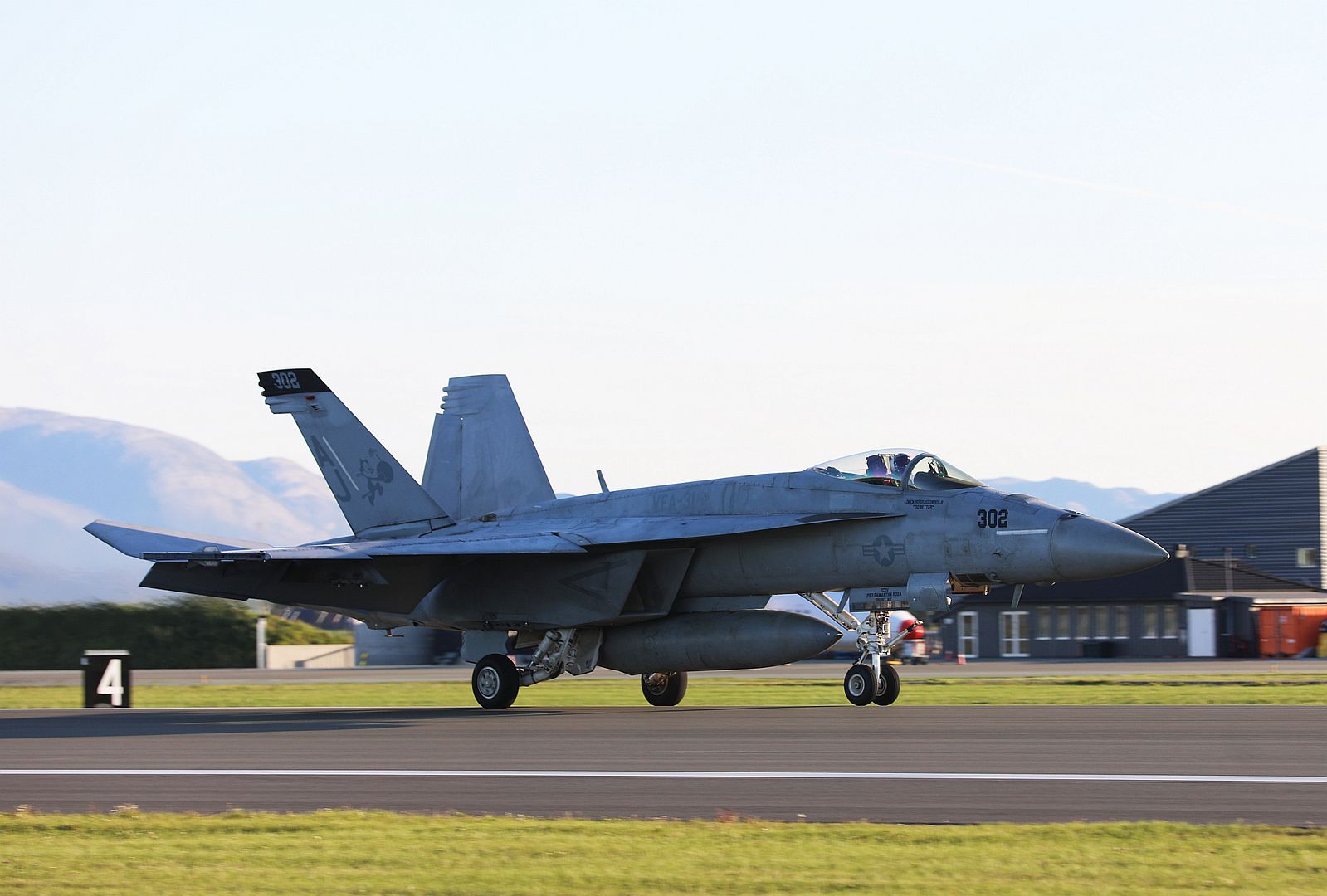
An F/A-18E Super Hornet, attached to Strike Fighter Squadron (VFA) 195 taxies on the flight deck of Nimitz-class aircraft carrier USS George Washington (CVN 73) while underway in the Pacific Ocean, Aug. 27, 2025. George Washington is the U.S. Navy’s premier forward-deployed aircraft carrier, a long-standing symbol of the United States’ commitment to maintaining a free and open Indo-Pacific region, while operating alongside allies and partners across the U.S. Navy’s largest numbered fleet. (U.S. Navy photo by Mass Communication Specialist Seaman Apprentice Anthony Vilardi)
An E-2D Hawkeye, attached to Carrier Airborne Early Warning Squadron (VAW) 125, readies for takeoff from the flight deck of Nimitz-class aircraft carrier USS George Washington (CVN 73), while underway in the Pacific Ocean, Aug. 28, 2025. George Washington is the U.S. Navy’s premier forward-deployed aircraft carrier, a long-standing symbol of the United States’ commitment to maintaining a free and open Indo-Pacific region, while operating alongside allies and partners across the U.S. Navy’s largest numbered fleet. (U.S. Navy photo by Mass Communication Specialist Seaman Nicolas Quezada)
A U.S. Air Force E-11A takes off within the U.S. Central Command area of responsibility, Aug. 19, 2025. The E-11A is equipped with a Battlefield Airborne Communications Node, which enables the aircraft to function similarly to a satellite, providing communication platforms to extend aerial command and control capabilities across the AOR. (U.S. Air Force photo by Senior Airman Erin Dunkleberger)
A U.S. Air Force F-35A Lightning II assigned to the 4th Fighter Squadron, Hill Air Force Base (AFB), Utah, takes off during Red Flag 25-3 at Nellis AFB, Nevada, July 30, 2025. The aircraft departs under night conditions to execute a training mission focused on suppression of enemy air defenses. (U.S. Air Force photo by Staff Sgt Zachary Rufus)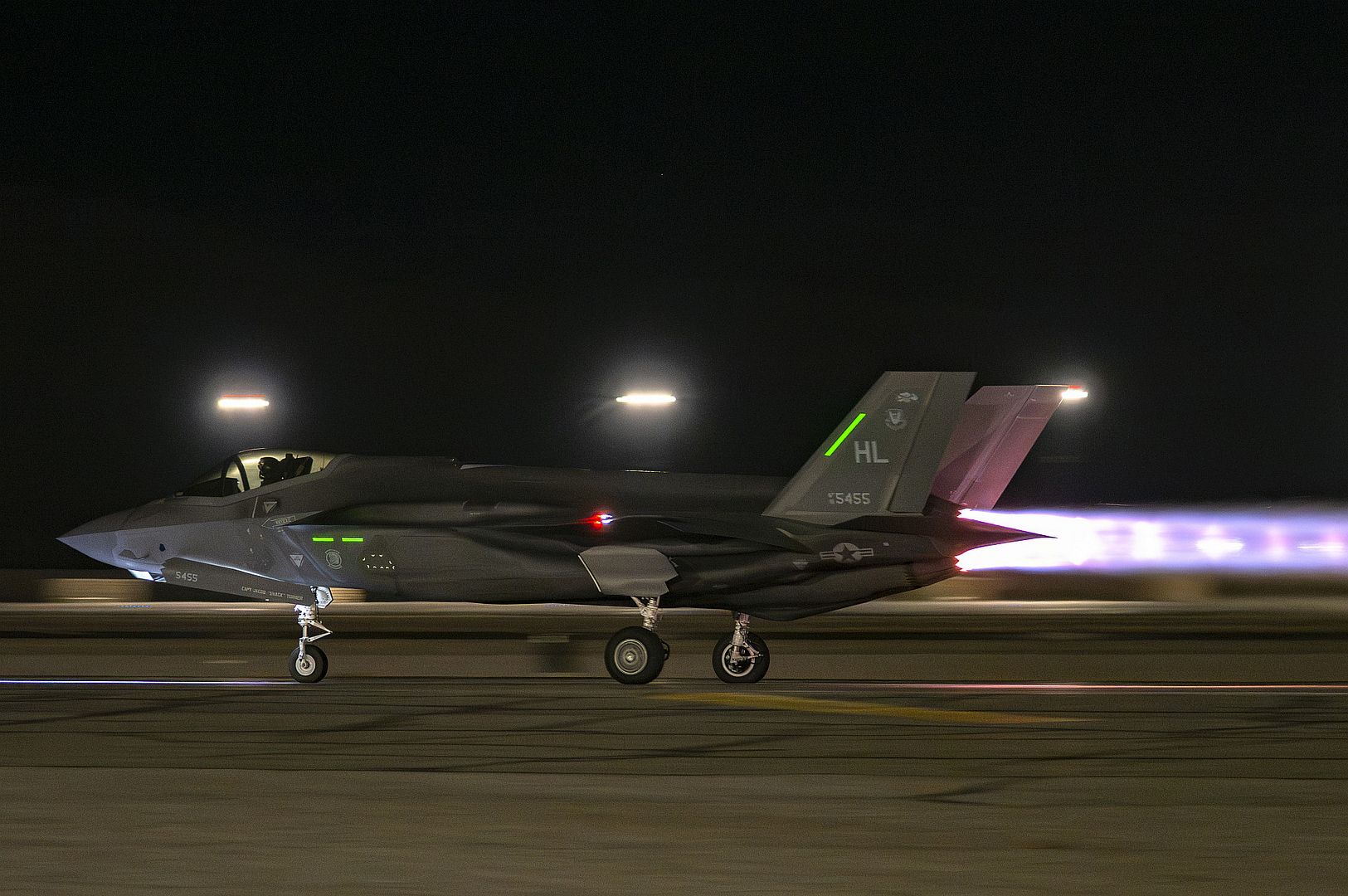
U.S. Marine Corps Capt. Kyle Flowers, Marine Fighter Attack Squadron 533 (VMFA-533) F-35B Lightning II pilot, prepares to launch in support of exercise Northern Edge 2025 at Joint Base Elmendorf-Richardson, Alaska, Aug. 20, 2025. NE25 is an exercise led by U.S. Indo-Pacific Command that serves as a platform for joint, multi-domain operations to deliver high-end, realistic warfighter training, strengthen joint interoperability, and sharpen the air and sea-based combat readiness of U.S. and participating forces. (U.S. Air Force photo by Airman 1st Class David S. Calcote)
RCAF Pilots from 3 Wing CFB Bagotville continued honing their skills aboard modernized CF-18 HEP-2 aircraft conducting simulated interceptions with a CP-140 Aurora from 14 Wing CFB Greenwood.
These exercises, held in Bagotville’s training airspace on July 31, 2025.
(Photo courtesy of the RCAF)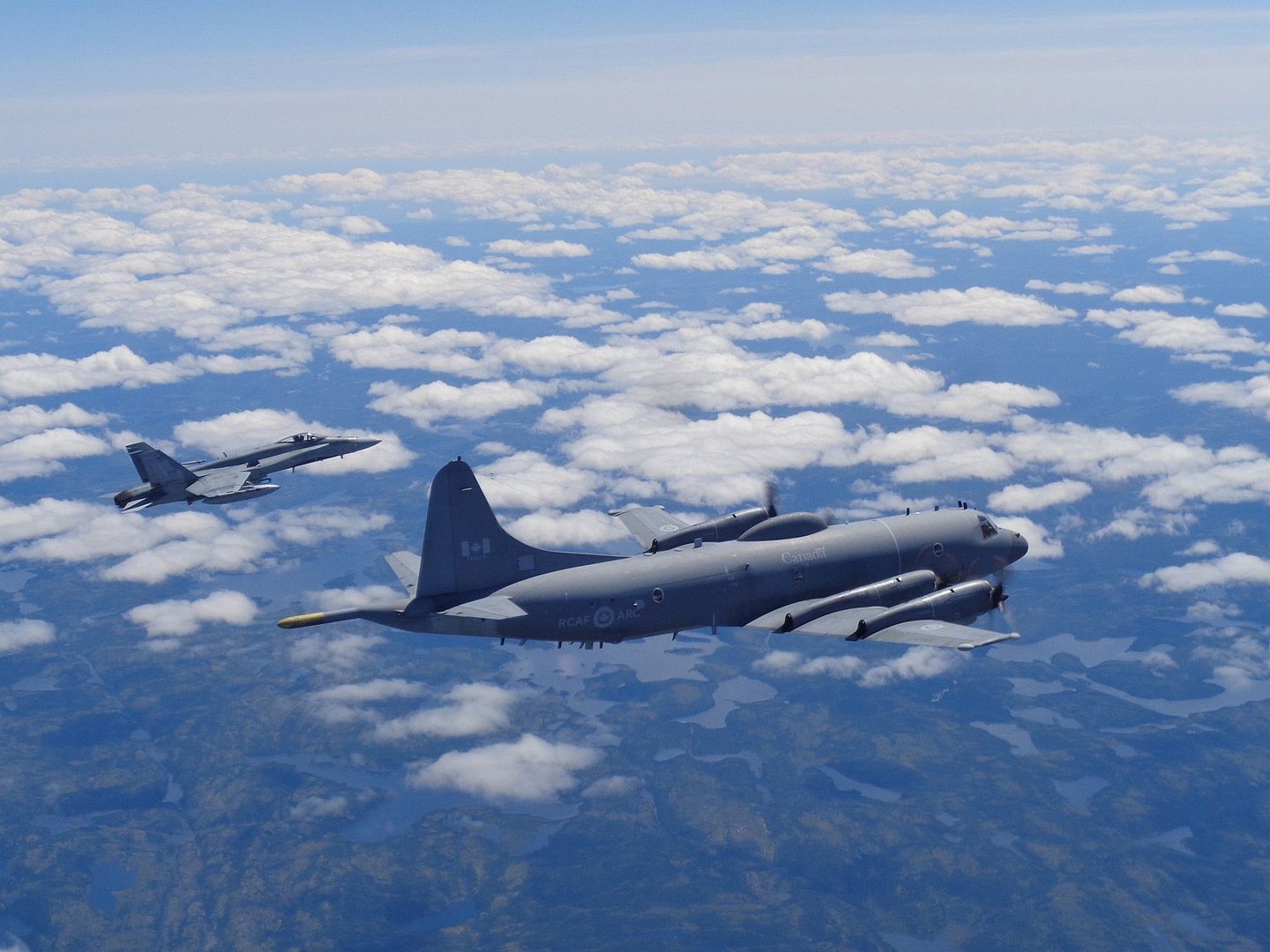
Dutch F-35s landed in Poland today. Starting Sunday, the fighter jets, along with the Norwegians, will secure NATO airspace over Eastern Europe for three months. The remaining personnel, including maintenance technicians, arrived earlier this week. The detachment is now complete.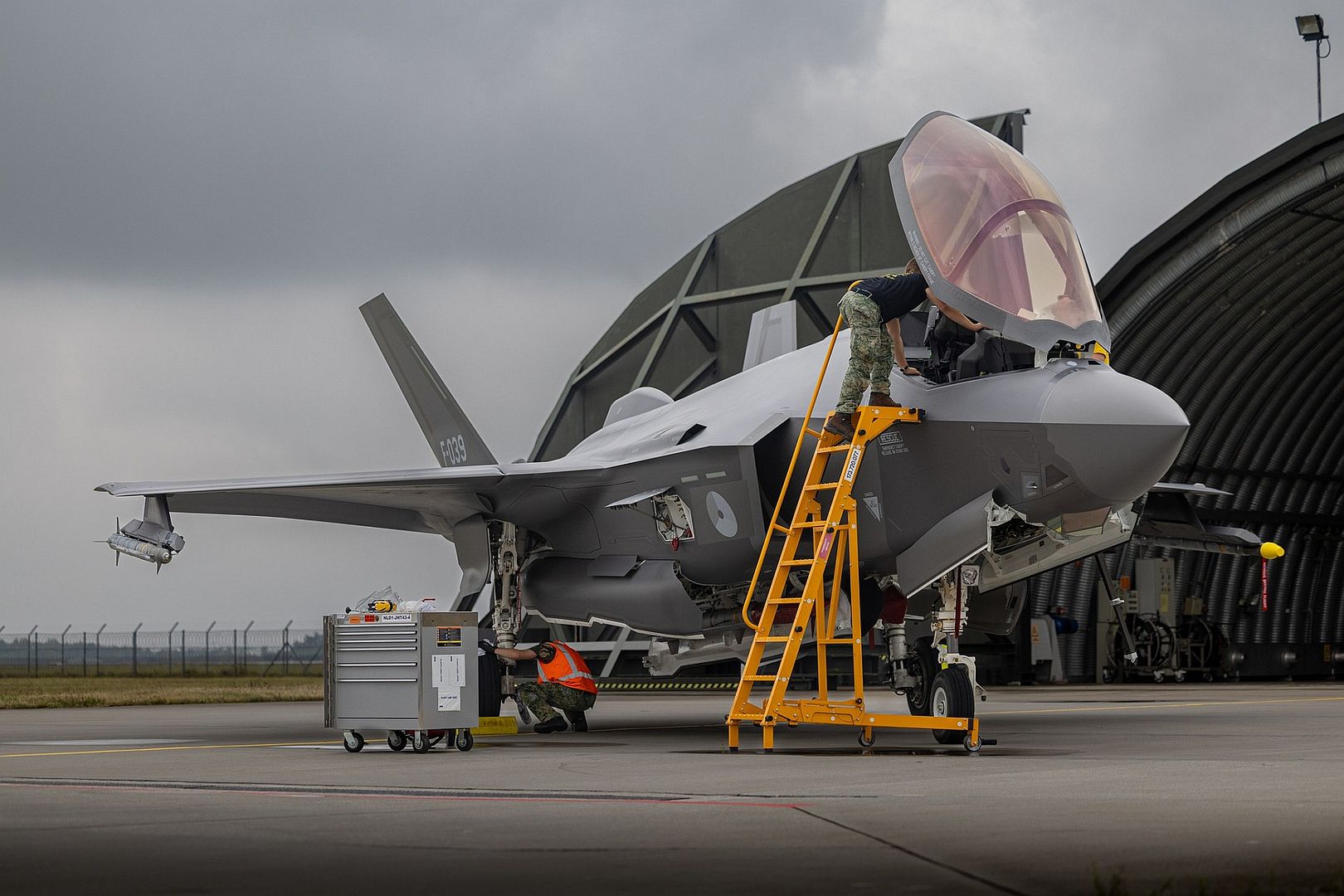
The F-35s departed from Volkel Air Base this morning. The fighter jets have multiple missions. Among other things, they must ensure the safe arrival of military equipment donated by NATO countries at its destination in Ukraine. The F-35s will remain within NATO's treaty area for this purpose.
This mission also includes the so-called quick reaction alert. The fighter jets are on standby 24/7 to respond quickly to aircraft or other objects entering the airspace without authorization.
(Photos courtesy of the Koninklijke Luchtmacht )
-
 Main AdminA U.S. Army AH-64E Apache Guardian helicopter assigned to the 4th Squadron, 6th Cavalry Regiment, 16th Combat Aviation Brigade, Joint Base Lewis-McChord, Washington, flies into a firing position at the joint land strike exercise with the U.S. Army, Indonesian National Armed Forces, and Australian Defence Forces during Super Garuda Shield 25 in Baturaja, Indonesia, Sept. 01, 2025. Super Garuda Shield is an annual exercise between the Indonesian National Armed Forces and the U.S. military designed to strengthen bilateral interoperability, capabilities, and cooperation. (U.S. Marine Corps photo by Sgt. Mitchell Johnson)
Main AdminA U.S. Army AH-64E Apache Guardian helicopter assigned to the 4th Squadron, 6th Cavalry Regiment, 16th Combat Aviation Brigade, Joint Base Lewis-McChord, Washington, flies into a firing position at the joint land strike exercise with the U.S. Army, Indonesian National Armed Forces, and Australian Defence Forces during Super Garuda Shield 25 in Baturaja, Indonesia, Sept. 01, 2025. Super Garuda Shield is an annual exercise between the Indonesian National Armed Forces and the U.S. military designed to strengthen bilateral interoperability, capabilities, and cooperation. (U.S. Marine Corps photo by Sgt. Mitchell Johnson)
An Egyptian F-16 Fighting Falcon departs after refueling from a USAF KC-135 Stratotanker during exercise BRIGHT STAR 25 over Egypt, Aug. 31, 2025. Strong partnerships deter aggression, reduce the burden on any single nation, and foster a collective approach to security. (U.S. Air Force photo by Senior Airman Natalie Jones)
Gavião Peixoto, Brazil, September 1, 2025 – Embraer (NYSE: ERJ/ B3: EMBR3), one of the global leaders in the aerospace industry, carried out the transfer flight of the first A-29N Super Tucano to OGMA, in Portugal. The first three aircraft, which landed yesterday at the facilities in Alverca do Ribatejo, district of Lisbon, will now receive the necessary equipment to operate in accordance with the operational requirements of NATO and Portugal.
"The acquisition of the A-29N Super Tucano reinforces FAP's confidence in Embraer products. We are sure that these aircraft have contributed even more to the modernization of the Portuguese fleet and to broader cooperation with the local industry," said Bosco da Costa Junior, President and CEO of Embraer Defense & Security.
The first three aircraft have landed in Portugal just eight months after the contract signature between the State of Portugal and Embraer, evidencing the unmatched customer focus and flexibility in deliveries that Embraer offers.
The A-29 Super Tucano is the global leader in its category with more than 600,000 flight hours. Currently, 22 air forces have selected the Super Tucano and other nations have already shown their interest in the platform due to its unmatched combination of capabilities, making it the most cost-effective option in the market.
For Air Forces seeking a proven, comprehensive, efficient, reliable, and cost-effective solution on a single platform, coupled with great operational flexibility, the A-29 Super Tucano offers a wide range of missions such as Advanced Pilot Training, CAS, Air Patrol, Air Interdiction, JTAC Training, Armed ISR, Border Surveillance, Reconnaissance and Air Escort.
The A-29 Super Tucano is the most effective multi-mission aircraft in its category, equipped with state-of-the-art technology for precise target identification, weapons systems, and a comprehensive communications suite. Its capability is further enhanced by advanced HMI avionics systems integrated into a robust airframe capable of operating from unpaved runways in austere environments and without infrastructure. Furthermore, the aircraft has reduced maintenance requirements and offers high levels of reliability, availability, and structural integrity with low life cycle costs.
-
 Main AdminA U.S. Air Force F-22 Raptor assigned to the 433rd Weapons Squadron, U.S. Air Force Weapons School, takes off for a training mission at Nellis Air Force Base, Nevada, Aug. 21, 2025. The USAFWS provides academic and advisory support to numerous units, enhancing air combat training for Airmen from the Air Force, Department of Defense and U.S. allied services each year. (U.S. Air Force photo by William R. Lewis)
Main AdminA U.S. Air Force F-22 Raptor assigned to the 433rd Weapons Squadron, U.S. Air Force Weapons School, takes off for a training mission at Nellis Air Force Base, Nevada, Aug. 21, 2025. The USAFWS provides academic and advisory support to numerous units, enhancing air combat training for Airmen from the Air Force, Department of Defense and U.S. allied services each year. (U.S. Air Force photo by William R. Lewis)
U.S. Air Force F-16 Fighting Falcons assigned to the 64th Aggressor Squadron, Nellis Air Force Base (AFB), Nevada, take off for a training mission at Nellis AFB, Nevada, Aug. 21, 2025. The mission of the Aggressors is to prepare warfighters to win in air combat against any adversary. (U.S. Air Force photos by William R. Lewis)
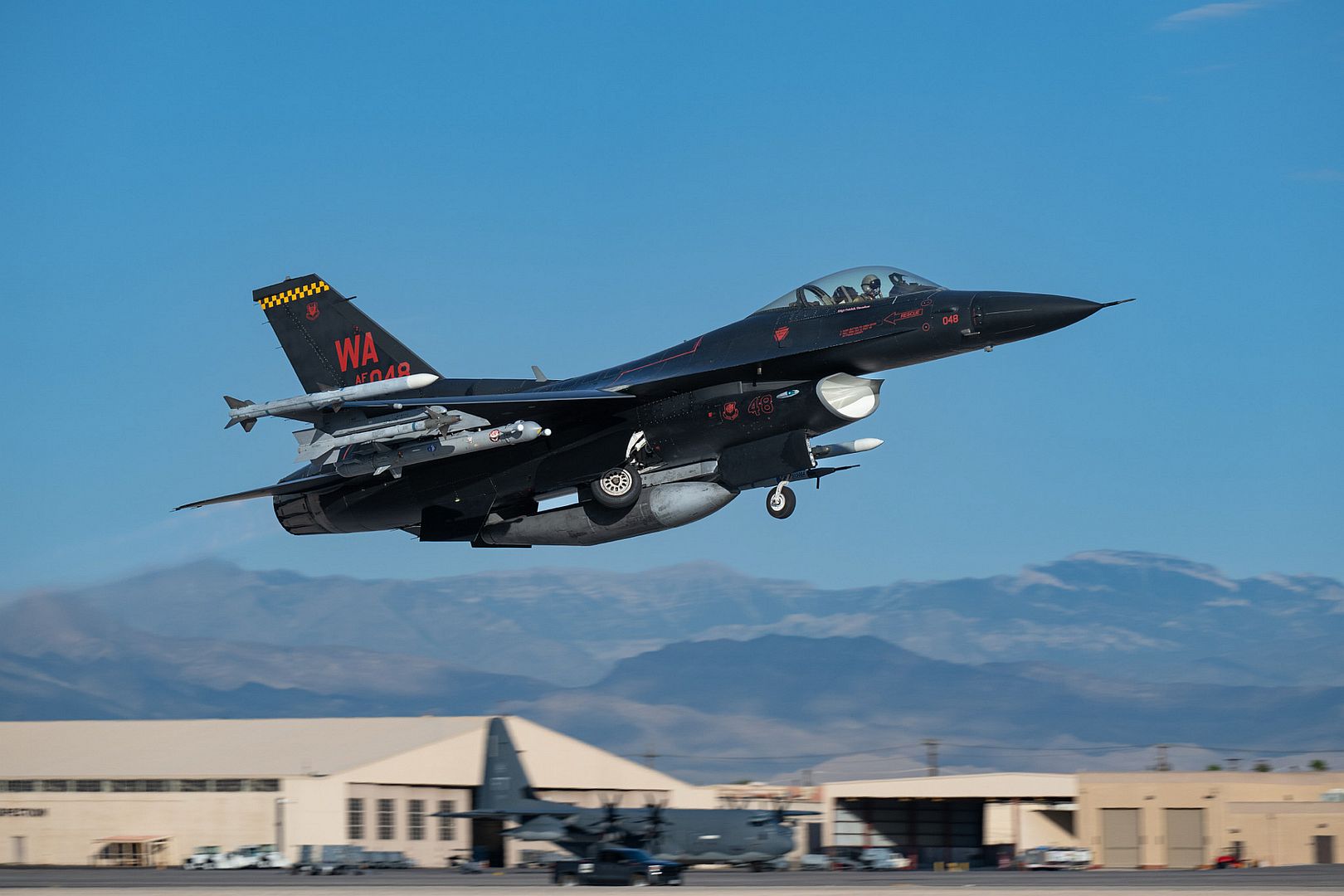
A U.S. Air Force F-35A Lightning II assigned to the 422nd Test and Evaluation Squadron (TES), takes off for a mission at Nellis Air Force Base, Nevada, Aug. 21, 2025. The 422nd TES is a geographically separated unit of the 53rd Test and Evaluation Group, Eglin AFB, Florida. (U.S. Air Force photo by William R. Lewis)
A U.S. Air Force F-22 Raptor II fighter jet assigned to the 422nd Test and Evaluation Squadron (TES), takes off for a mission at Nellis Air Force Base, Nevada, Aug. 21, 2025. The 422nd TES performs operational testing of all fighter aircraft and munitions used by Air Combat Command. (U.S. Air Force photo by William R. Lewis)
A U.S. Air Force F-16 Fighting Falcon assigned to the 706th Aggressor Squadron, Nellis Air Force Base (AFB), Nevada, takes off for a training mission at Nellis AFB, Nevada, Aug. 21, 2025. The mission of the Aggressors is to prepare warfighters to win in air combat against any adversary. (U.S. Air Force photo by William R. Lewis)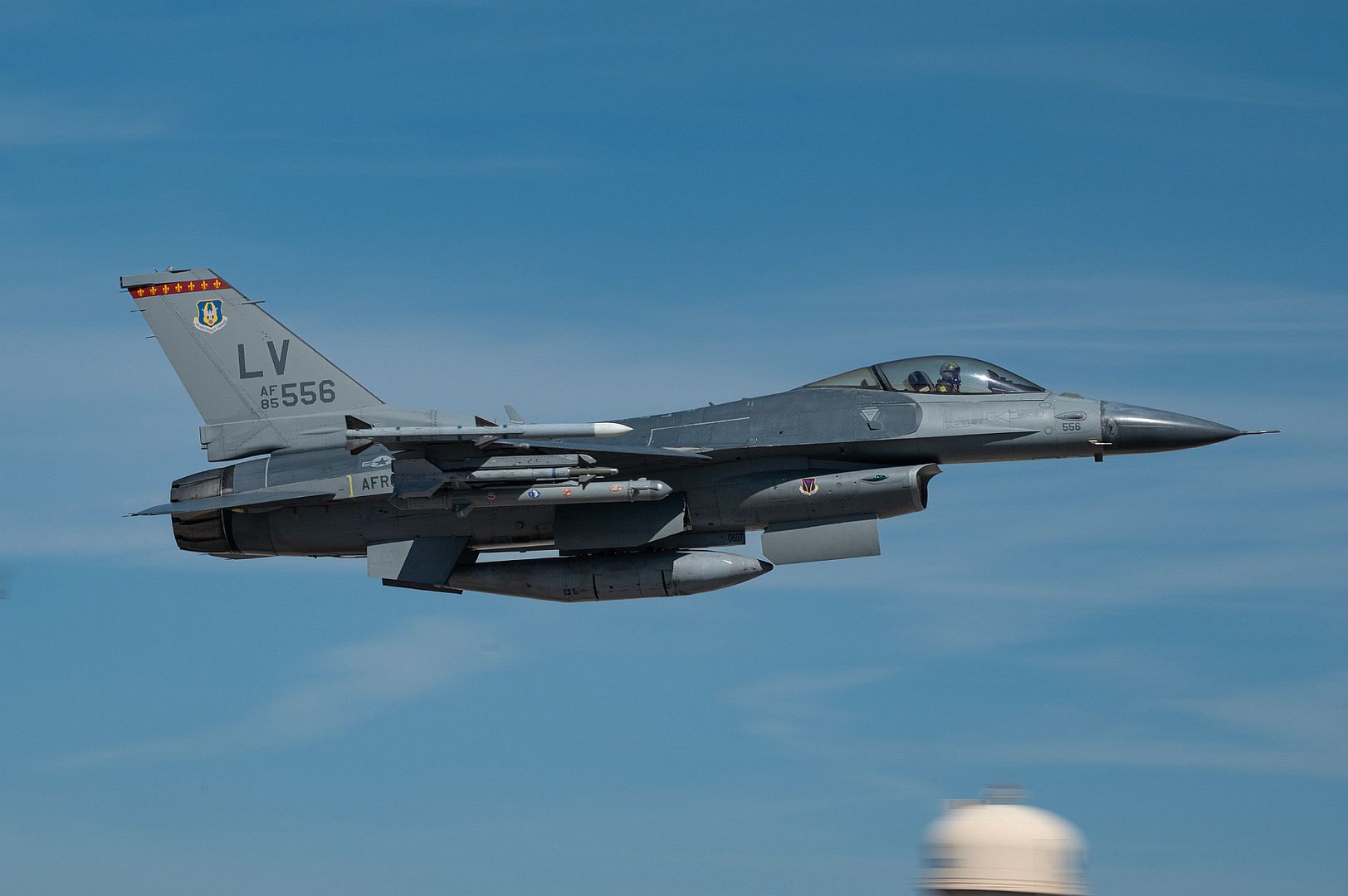
SEATTLE, Sept. 3, 2025 /PRNewswire(opens in a new tab)/ -- Boeing [NYSE:BA] and WestJet today announced the Canadian airline is buying 67 more Boeing jets, bringing its firm order book to 123 airplanes as the carrier plans to expand its fleet and domestic and international networks.
WestJet's order, which was listed as unidentified on Boeing's Orders & Deliveries website in June, includes:
60 737-10 jets and options for 25 more
Seven 787-9 jets and options for four more
"With the addition of these aircraft, WestJet has the largest order book of any airline in Canada, and will double our fleet of Dreamliners, underpinning our growth plans and our commitment to affordable travel options for Canadians and exciting career paths for our people," said Alexis von Hoensbroech, WestJet chief executive officer. "These highly efficient and comfortable aircraft are critical to the growth and renewal of our fleet and will also significantly improve our fuel consumption."
WestJet began operations in 1996 with three Boeing 737 aircraft. Today, the airline flies nearly 150 Boeing 737s allowing them to comfortably and affordably connect Canada. WestJet operates both the 787 Dreamliner and 737 MAX on its long-haul routes and with this order, the carrier will add to its fleet of seven 787-9s that connect Canadians with destinations across Europe, Asia and Latin America.
"We are honored that WestJet has once again placed its trust in Boeing with a major investment that builds on our three decades of partnership and solidifies their fleet for the decades ahead," said Stephanie Pope, president and CEO of Boeing Commercial Airplanes. "We look forward to supporting WestJet's exciting growth as they leverage the 737 MAX and 787 Dreamliner to serve even more passengers with great efficiency and comfort."
WestJet's fleet is among the youngest of established North American carriers with an average age of approximately 10 years. This deal brings WestJet's 737-10 orderbook to 107 airplanes, allowing the carrier to benefit from operational commonality while serving more passengers with the lowest cost per seat of any single-aisle airplane. The 787 Dreamliner prioritizes passenger comfort and operates more efficiently, bringing guests more affordable travel options.
A leading global aerospace company and top U.S. exporter, Boeing develops, manufactures and services commercial airplanes, defense products and space systems for customers in more than 150 countries. Our U.S. and global workforce and supplier base drive innovation, economic opportunity, sustainability and community impact. Boeing is committed to fostering a culture based on our core values of safety, quality and integrity.
Fort Lauderdale, Florida, USA – 2 September, 2025: Azorra has delivered the first new Embraer E190-E2* twin-engine passenger aircraft to Virgin Australia, marking a new airline partnership for the lessor and the first Embraer E190-E2 to be operated by a major airline group in Australia.
The delivery of the E-Jet was marked by a handover ceremony today at Embraer’s São José dos Campos facility, hosted by senior representatives from Azorra, Virgin Australia and Embraer. With 1,900 deliveries since 2004 the E-Jet is the third most delivered aircraft in history.
These new generation, small narrowbody aircraft will support Virgin Australia Regional Airlines’ fleet modernization efforts as it replaces its current fleet of Fokker 100s with the Embraer E2 variant. Delivered from Azorra’s firm orderbook with Embraer, another three aircraft will be delivered to Virgin Australia later this year and through 2026. Virgin Australia has a total of eight firm orders for E2 aircraft.
The new 100-seat E190-E2 will deliver fuel savings of up to 30% compared to Virgin Australia’s current Fokker 100 fleet, lowering emissions and operating costs on key routes in Western Australia. Powered by Pratt & Whitney GTF engines, the E190-E2 offers greater efficiency, range and superior performance, while its quiet, spacious two-by-two cabin ensures a more comfortable journey for passengers.
John Evans, CEO and founder, Azorra, says: “Welcoming Virgin Australia as a new customer marks a proud milestone for our team as we deliver the first E2 to be operated by a major airline group in Australia and expand our presence in Oceania. The E190-E2 offers outstanding efficiency and reduced fuel burn, making it the ideal aircraft for Virgin Australia’s fleet modernization program. Powered by Pratt & Whitney’s GTF engines, this modern aircraft supports Virgin Australia’s commitment to reliable, high-frequency service while enhancing overall operational performance.”
Nick Rohrlach, Group Executive, Virgin Australia Regional Airlines, says: “We are incredibly excited by the introduction of the Embraer 190-E2s to the Virgin Australia Regional Airlines fleet. Replacing our Fokker 100s with these next-generation jets allows us to better connect resources industry clients and regional communities across Western Australia with improved reliability, significantly reduced noise, and lower emissions. These aircraft are perfectly designed for the challenging climates and environments we operate in, while offering our customers a spacious and comfortable in-flight experience.”
Arjan Meijer, President & CEO, Embraer Commercial Aviation, says: “The delivery of the first E190-E2 to Virgin Australia together with our leasing partner Azorra is a significant milestone for Embraer’s evolution and growth in the region. With its exceptional efficiency, low noise and emissions profile, and enhanced passenger comfort, the E190-E2 will be a game changing step up from the airline’s venerable Fokker fleet, perfectly complementing the airline’s larger narrowbodies.”
WICHITA, Kan. (September 2, 2025) – Textron Aviation Inc., a Textron Inc. (NYSE: TXT) company, today announced the launch of ProParts+, a new addition to the company’s industry-leading ProAdvantage support programs, designed specifically for Cessna Citation 525 series operators. ProParts+ builds on the trusted foundation of the ProParts program, offering expanded coverage to address key customer identified priorities and enhance operational predictability.
“Expanding our ProAdvantage portfolio with ProParts+ reflects our continued investment in the long-term support of the Citation 525 Series,” said Brad White, senior vice president, Global Parts Distribution. “ProParts+ is a direct response to customer feedback. We’ve designed this program to provide greater peace of mind and value by covering high-cost components and consumables that matter most to our operators.”
ProParts+ introduces several new benefits for the 525 series, including:
Landing Gear Coverage – Enhanced coverage from trunnion down, including certain corrosion protection and serialized and non-serialized components typically excluded from ProParts coverage. This can include trunnions, trailing links, axles, oleos, shimmy dampeners, wheels, actuators, hydraulic lines, wire bundles and hardware found in the nose and main wheel wells
Consumables – Coverage for items such as certain corrosion inhibiting compounds (CICs) and fuel test kits
Standard Freight Coverage – Included for covered parts
Contract Buy-Out Option – Available for early terminations due to aircraft sale
Textron Aviation’s ProParts program is a fixed-cost ProAdvantage initiative that simplifies maintenance planning by covering airframe systems and avionics parts required for line, scheduled and unscheduled maintenance. With predictable monthly payments based on reported flight hours, ProParts helps operators manage expenses consistently while benefiting from OEM original or authorized parts.
ProParts+ is now available for enrollment and will be offered alongside the existing ProParts program. Customers can visit the ProAdvantage website for more information.
Vodochody, 28 August 2025 – AERO Vodochody AEROSPACE has successfully completed the general overhaul and partial modernization of four L-39ZA Albatros aircraft for the Bulgarian Air Force, delivering the final aircraft in August in full accordance with the agreed schedule and contractual terms.
“We deeply value our long-standing partnership with the Bulgarian Air Force and are eager to continue supporting their pilot training capabilities,” said Viktor Sotona, Chairman of the Board and President of AERO Vodochody AEROSPACE. “With the delivery of four upgraded L-39ZA aircraft, we reaffirm our commitment to Bulgaria. Looking ahead, the L-39 Skyfox offers a natural evolution—combining proven reliability with cutting-edge technology to meet the demands of modern air forces.”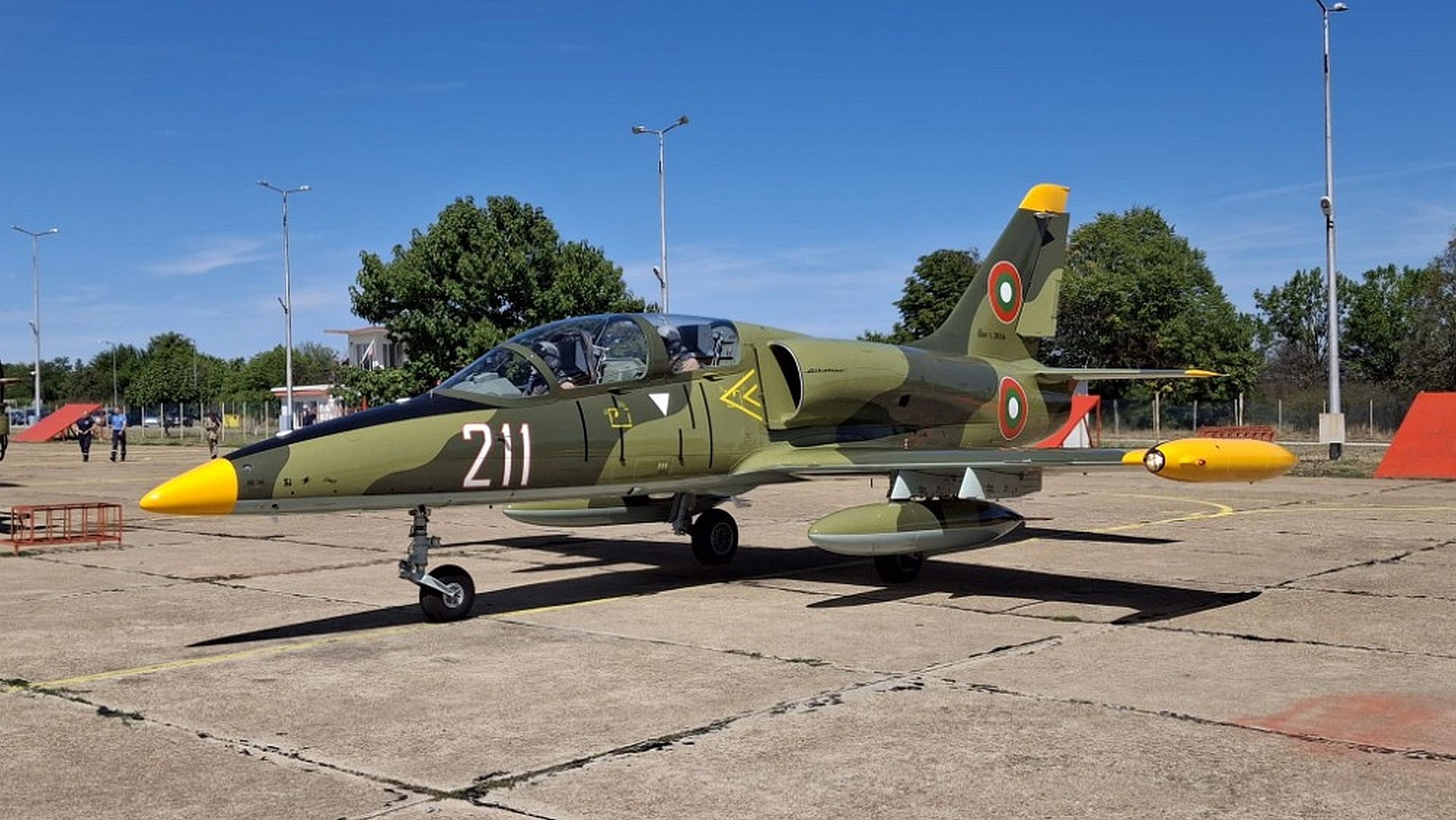
The contract, signed in late 2022 between AERO and the Bulgarian Ministry of Defence, covered the overhaul of four L-39ZA aircraft and their AI-25TL engines. The project also involved key Czech partners, notably the state-owned LOM Praha, which handled engine overhaul.
Skyfox: The Next Generation Tactical Trainer
The Bulgarian Air Force has long relied on the L-39ZA Albatros for pilot training. Its successor, the L-39 Skyfox, retains the Albatros’s renowned flight characteristics, safety, and reliability, while introducing significant upgrades. As part of a comprehensive jet pilot training system, Skyfox integrates digital training tools and supports modern Live, Virtual, and Constructive (LVC) training methodologies.
Designed as a versatile, multi-role platform, the L-39 Skyfox is ideal for training pilots for advanced fighters such as the F-16, F-35, and Saab JAS 39 Gripen. It also supports light combat and reconnaissance missions. The Skyfox is the most efficient aircraft in its category, and certified to EU and NATO standards..
Strategic Benefits for Bulgaria
Adopting the L-39 Skyfox would enable the Bulgarian Air Force to maintain continuity in pilot training, expand operational capacity, and prepare personnel for transition to 4 and 5th-generation fighters, particularly the F-16.
Beyond training, Skyfox offers operational flexibility. With five hardpoints and a payload capacity of up to 1.65 tonnes, it can carry a range of armaments and equipment, including guided and unguided munitions, machine guns, and external fuel tanks. Its endurance of up to four hours makes it well-suited for ISR missions such as border and coastal surveillance.
Skyfox also delivers exceptional cost-efficiency, with a service life of up to 15,000 flight hours and some of the lowest operating costs in its category.
AERO offers industrial cooperation opportunities, including technology transfer, which could bring direct economic benefits to Bulgarian industry. As NATO allies, the Czech Republic and Bulgaria could further enhance collaboration through joint training programs and multinational exercises, strengthening interoperability and readiness.
AERO Vodochody AEROSPACE a.s. focuses on the development, production, maintenance, and modernization of civil and military aircraft and is the largest aircraft manufacturer in the Czech Republic and one of the oldest in the world. In its own aircraft programs, Aero is a long-standing partner to numerous military air forces and holds a strong position in the market for military trainer and light combat aircraft. With over 11,000 aircraft produced over its 100-year history, hundreds of L-39 Albatros aircraft still in operation with dozens of military operators and aerobatic display teams, and especially with its new L-39 Skyfox, Aero has proven itself a reliable partner in the global jet trainer market. In the field of civil aviation, Aero works with the world’s largest aircraft manufacturers on a broad range of projects and is a partner in several risk-sharing programs, taking responsibility not only for manufacturing and assembly of aircraft components, but also for their development.
The Royal Air Force’s latest Remotely Piloted Air System (RPAS), the Protector RG Mk1, has started deployed assurance testing and operator training in preparation for its replacement of Reaper’s operational role within Op Shader.
Protector introduces a unique and long-endurance capability to UK Defence, specialising in intelligence, surveillance, target acquisition and reconnaissance (ISTAR) as well as strike operations.
(Photo courtesy of the RAF)
Cleared for take-off Students pilots took to the sky above Auckland in six T-6C Texan II during Exercise Wise Owl recently.
The two-week pilot training exercise at Base Auckland teaches student pilots to fly in close formation - a skill they require when they move to operational fixed wing or rotary squadrons once they have gained their wings.
(Photo courtesy of the RNZAF)
-
 Main AdminA crew from Coast Guard Air Station Barbers Point conducts drop training from an HC-130 Hercules airplane near Oahu, Sept. 2, 2025. Crews from Air Station Barbers Point train diligently to maintain proficiency in technical skills such as drop operations. (U.S. Coast Guard photo by Petty Officer 3rd Class Avery Tibbets)
Main AdminA crew from Coast Guard Air Station Barbers Point conducts drop training from an HC-130 Hercules airplane near Oahu, Sept. 2, 2025. Crews from Air Station Barbers Point train diligently to maintain proficiency in technical skills such as drop operations. (U.S. Coast Guard photo by Petty Officer 3rd Class Avery Tibbets)
An Indian Air Force C-17 Globemaster lands at Eielson Air Force Base, Alaska, Sept. 2, 2025. The Soldiers arrived to participate in Exercise Yudh Abhyas 2025 in Fairbanks, Alaska, a bilateral training exercise that builds interoperability, strengthens defense partnerships and enhances joint readiness in the Indo-Pacific region. (U.S. Air Force photo by Staff Sgt. Kimberly Touchet)
A U.S. Air Force F-16C Fighting Falcon, assigned to the 55th Expeditionary Fighter Squadron, taxis before a Composite Air Operation during BRIGHT STAR 25 at Cairo West Air Base, Egypt, Sept. 3, 2025. BRIGHT STAR 25 improves responsiveness, readiness and interoperability across all domains. By practicing large-scale, high-intensity operations, partner forces enhance their ability to rapidly deploy, integrate and fight as one, collectively ensuring the U.S. and partner nations remain postured to deter and defeat any adversary. (U.S. Air Force photo by Senior Airman Erin Dunkleberger)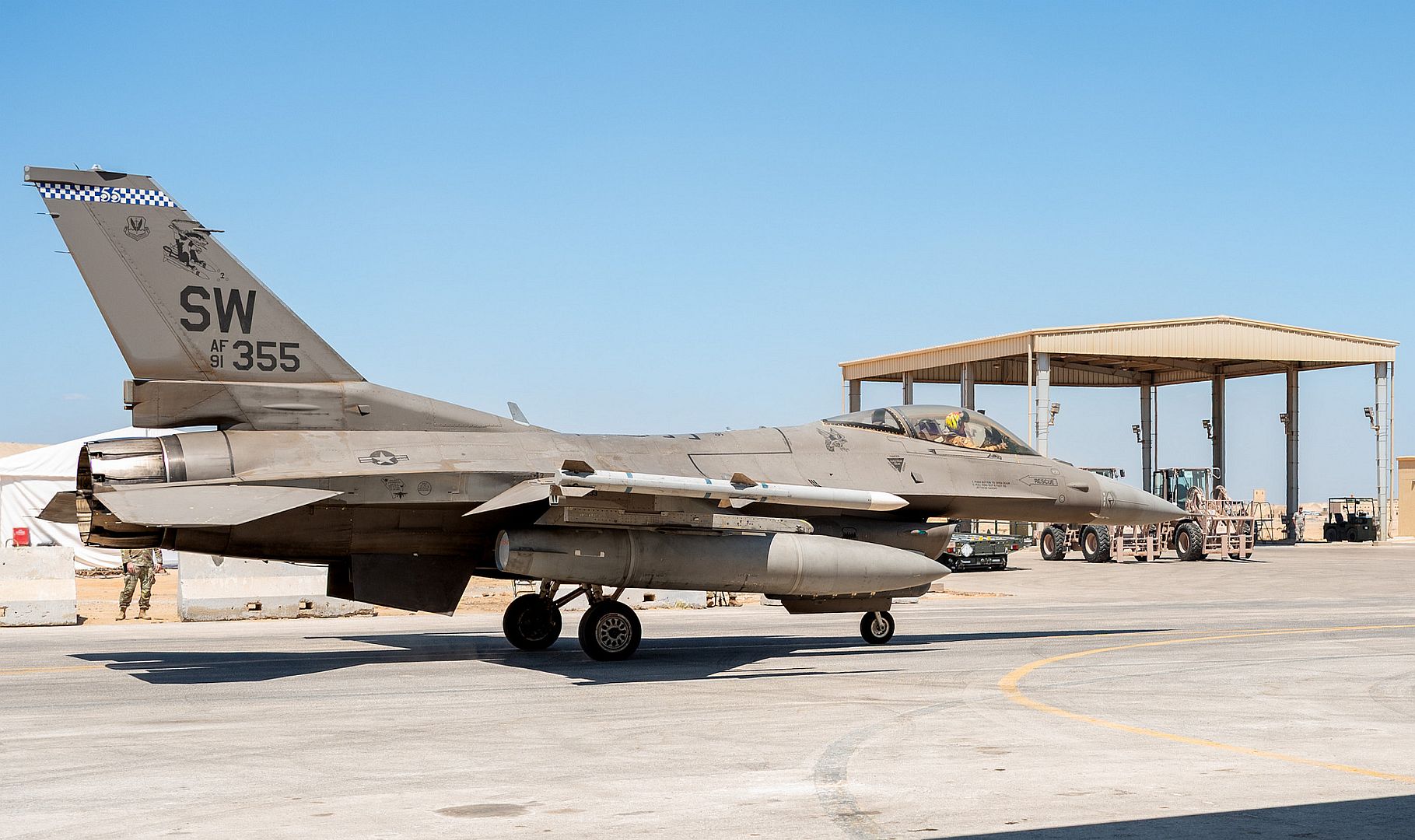
An Italian Air Force Typhoon II taxis by a U.S. Air Force F-16 Fighting Falcon, before a night Combined Air Operation with partner nations during BRIGHT STAR 25 at Cairo West Air Base, Egypt, Sept. 1, 2025. BRIGHT STAR 25 participation bolsters strong multinational partnerships, deters aggression, reduces the burden on any single nation, and fosters a collective approach to security. (U.S. Air Force photo by Staff Sgt. Kevin Dunkleberger)
A U-2 Dragon Lady displays memorial nose art dedicated to Capt. David “Hawk” Hawkens while preparing for takeoff at RAF Fairford, England, Aug. 29, 2025. Hawkens died in 1995 when his U-2R crashed shortly after departure from the same airfield. (U.S. Air Force photo by Tech. Sgt. Jessica Avallone)
A U-2 Dragon Lady ascends over RAF Fairford, England, Aug. 29, 2025. The aircraft bore memorial nose art dedicated to Capt. David “Hawk” Hawkens, who died in a U-2 mishap at the base in 1995. (U.S. Air Force photo by Tech. Sgt. Jessica Avallone)
A 96th Test Wing F-15E Strike Eagle flies during a test mission May 22, 2025 over Eglin Air Force Base, Florida. The 96 TW and the 53rd Wing teamed up to test AGR-20F Advanced Precision Kill Weapon System II laser-guided rockets on the F-15E in May in an effort to get the capability to the warfighter as quickly as possible. (U.S. Air Force photos by Staff Sgt. Thomas Barley)
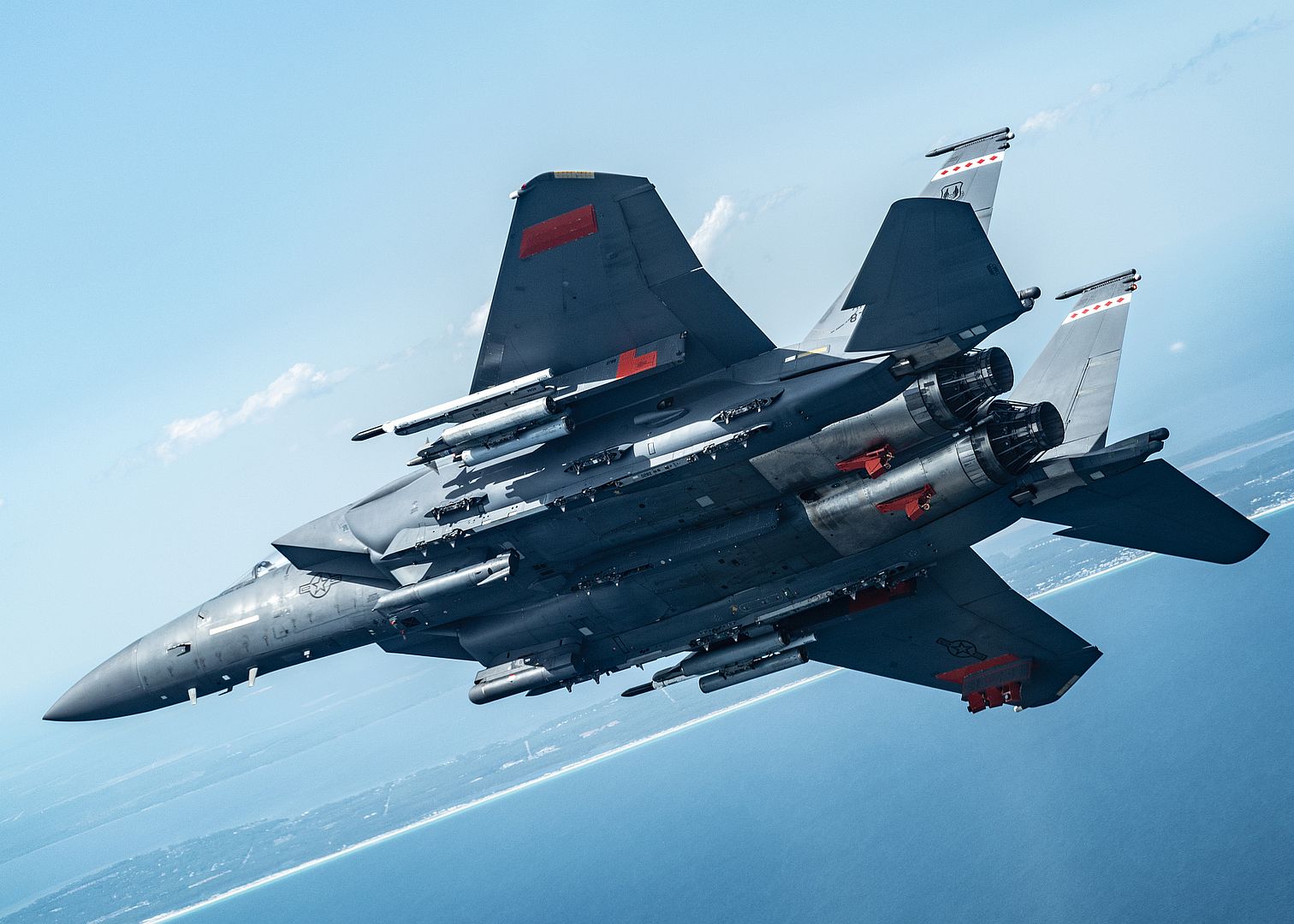
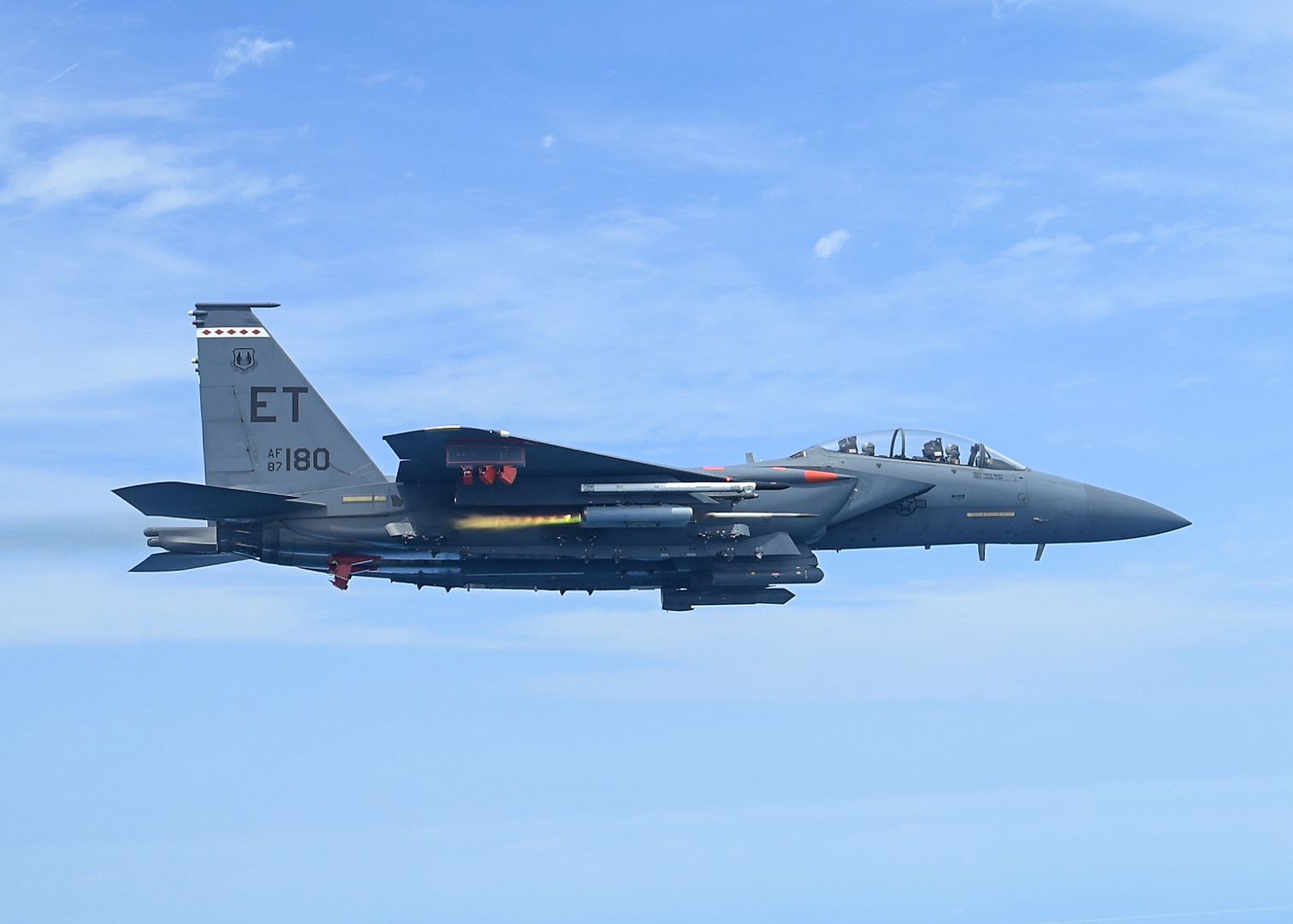
Toulouse, France, 4 September 2025 – Air Côte d’Ivoire, the national flag carrier of the Republic of Côte d’Ivoire, has taken delivery of its first of two Airbus A330-900 aircraft.
The A330neo is the first widebody aircraft in Air Côte d’Ivoire’s fleet and is configured in a comfortable four-class cabin layout with four seats in First, 44 in Business, 21 in Premium Economy and 173 in Economy class. Air Côte d’Ivoire is the leading airline in West and Central Africa with 22 destinations served all over the continent. The A330-900 fleet will play a key role in Air Côte d’Ivoire’s expansion plans to Europe, starting with the French Capital, Paris, then to destinations in the Middle-East and North America.
Air Côte d’Ivoire's first A330neo delivery flight from Toulouse to Abidjan transported five tonnes of humanitarian goods, including materials and school supplies. This marked the airline's third goodwill flight, coordinated with the Airbus Foundation and supported by Aviation Sans Frontières, who provided the donations. The goods were distributed to two local NGOs, LifeShine and la Bienfaisance, to directly support their initiatives within the health and education sectors in Abidjan.
The A330neo features the award-winning Airspace cabin, which offers passengers a unique experience, high level of comfort, ambiance, and design. This includes more individual space, enlarged overhead bins, a new lighting system and access to the latest in-flight entertainment and connectivity systems.
At the end of July 2025, the A330 Family had won over 1,920 firm orders from more than 130 customers worldwide. As with all Airbus aircraft, the A330neo aircraft is already able to operate with up to 50% Sustainable Aviation Fuel (SAF). Airbus is targeting to have its aircraft up to 100% SAF capable by 2030.
Gavião Peixoto, Brazil, September 04, 2025 – Embraer (NYSE: ERJ/ B3: EMBR3), a global leader in the aerospace industry, and Panama have completed the signing of a contract for the acquisition of four A-29 Super Tucano aircraft. The fleet will be operated by the Panamanian National Air and Naval Service (SENAN, in Spanish) as a new surveillance and protection platform.
"It is an honor for Embraer to see another Latin American country choose the A-29 Super Tucano to leverage its surveillance, reconnaissance and protection capabilities. Panama’s choice of the Super Tucano, a world leader in its category, will certainly serve as a strong ally to support the country in its mission to maintain national sovereignty," said Bosco da Costa Junior, President and CEO of Embraer Defense & Security.
The announcement is part of the entity's program to structure and expand operational capacity and will largely benefit the national security project underway in the country. With the signing of the contract, Panama becomes the eighth Latin American nation to choose the A-29 Super Tucano, along with Brazil, Chile, Colombia, Ecuador, Paraguay, Uruguay and the Dominican Republic.
The Super Tucano is the global leader in its category with more than 600,000 flight hours. Currently, 22 air forces have selected the Super Tucano, and other nations have already shown interest in the platform due to the combination of reliability, availability, robustness and low operating costs.
The Super Tucano is designed for air forces seeking a proven, comprehensive, efficient, reliable, and cost-effective solution on a single platform, coupled with great operational flexibility. The aircraft operates in a wide range of missions, such as air patrol, special operations, air and tactical coordinator (TAC), ISR, border surveillance and monitoring, control of illicit activities, reconnaissance, air escort, and basic, operational and advanced pilot training.
SAN DIEGO – 04 September 2025 – General Atomics Aeronautical Systems, Inc. (GA-ASI) deployed an Anti-Submarine Warfare (ASW)-configured MQ-9B SeaGuardian® Unmanned Aircraft System (UAS) to Naval Air Station Whidbey Island (NASWI), Washington, to support its Open House event on August 23.
The naval air station’s Open House showcased cutting-edge naval aviation capabilities as well as some vintage platforms from the past. At the request of NASWI leadership, GA-ASI provided its MQ-9B SeaGuardian to give public and military attendees an up-close look at a multi-mission Group 5 UAS, the largest and most capable type, and a glimpse into the future.
Whidbey Island has been a base for MQ-9B SeaGuardian’s mission capabilities as part of several Navy exercises, including Northern Edge and Integrated Battle Problem 2023, and supported the aircraft carrier pre-deployment workups. However, during all of these events, the MQ-9B never landed at Whidbey Island. It was instead controlled and its data processed remotely from the naval air station while the aircraft flew in Hawaiian, Southern California, and Alaskan airspace. Crews fly GA-ASI’s aircraft via satellite link, which means they can be sited anywhere, even thousands of miles away from where the aircraft is flying. The MQ-9B is visiting now for the Open House to let sailors and the public see the platform that will be operated remotely from Whidbey Island in an upcoming Commander, U.S. Pacific Fleet Operational Evaluation deployment to the Indo-Pacific Command’s Area of Responsibility (AOR) in early 2026.
Utilizing its advanced onboard Detect and Avoid System, the MQ-9B was able to launch from its flight facility near Palmdale, California, and fly to Whidbey Island without the normal special handling required for UAS. Effectively, it was able to operate in the national airspace like any other piloted aircraft.
In addition to spotlighting the aircraft’s ASW payloads, GA-ASI was able to demonstrate autonomous landing and takeoff capability and showcase onboard signals intelligence and maritime radar packages. The MQ-9B SeaGuardian was also configured with additional hardpoint pylons to showcase its external carriage capability, including multiple stations supporting various payloads and weapons.
“I’m pleased to support the Navy’s continuing public engagement efforts with our MQ-9B and appreciate NAS Whidbey leadership’s ongoing support of SeaGuardian operations. I look forward to continuing to work together as we demonstrate the capability of this multi-faceted UAS and fill critical capability gaps,” said GA-ASI President David R. Alexander.
Leading this event was Naval Air Warfare Center Aircraft Division (NAWCAD) AIRWorks, which plays a key role in overseeing and supporting the development of the MQ-9B SeaGuardian. AIRWorks has partnered with GA-ASI in multiple ASW and Intelligence, Surveillance, Reconnaissance, and Targeting demonstrations, including the Rim of the Pacific (RIMPAC) exercise in July 2024. NAWCAD AIRWorks is also the Lead Systems Integrator and Program Manager for the Navy Operational Evaluation of MQ-9B in 2026.
With strong demand already in place from customers around the world, GA-ASI anticipates growing interest in the MQ-9B SeaGuardian given its record of delivering high-end maritime capabilities at a significantly lower cost than traditional manned maritime platforms.
-
 Main AdminThe 85th Fighter Group trains our Foreign Military Sales partners at Ebbing Air National Guard Base in Fort Smith, Arkansas. Poland is the first of several countries who is participating in the program.
Main AdminThe 85th Fighter Group trains our Foreign Military Sales partners at Ebbing Air National Guard Base in Fort Smith, Arkansas. Poland is the first of several countries who is participating in the program.
(Photos by Maj. Jennifer Gerhardt)

A U.S. Air Force A-10C Thunderbolt II assigned to the 74th Fighter Squadron lands at the Keesler airfield on Keesler Air Force Base, Mississippi, Aug. 20, 2025. Beginning on Aug. 18 and concluding on Aug. 21, 2025, four A-10C aircraft assigned to the 74th FS operated out of Keesler Air Force Base for a Close Air Support training with joint terminal air controllers. (U.S. Air Force photo by Airman 1st Class Kaleb Tewes)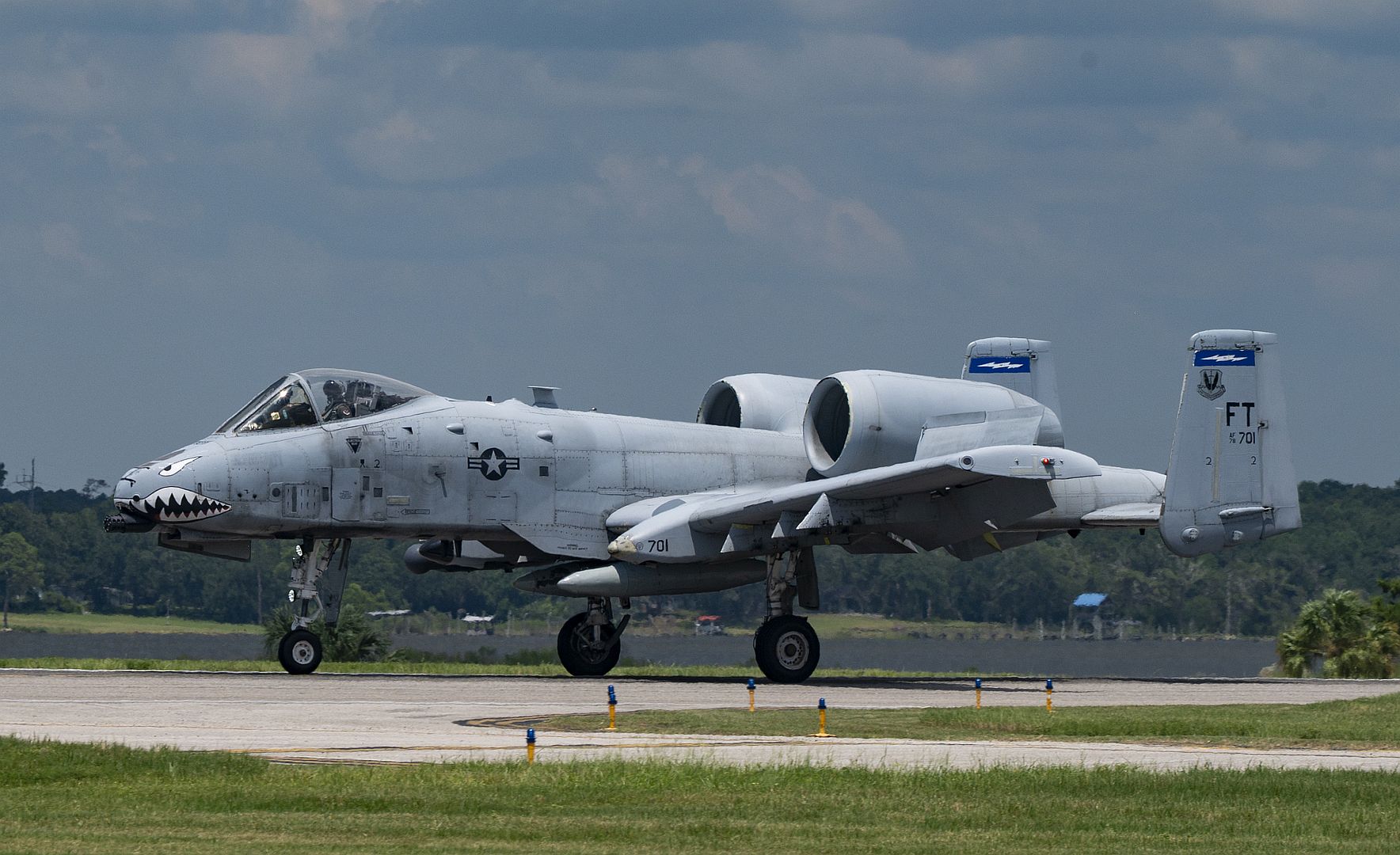
A U.S. Air Force F-15E Strike Eagle assigned to the 422nd Test and Evaluation Squadron (TES) takes off for a mission from Nellis Air Force Base, Nevada, Aug. 26, 2025. The 422nd TES conducts operational testing to validate combat capabilities and ensure readiness across the Air Force’s fighter fleet. (U.S. Air Force photo by Airman 1st Class Heather Amador)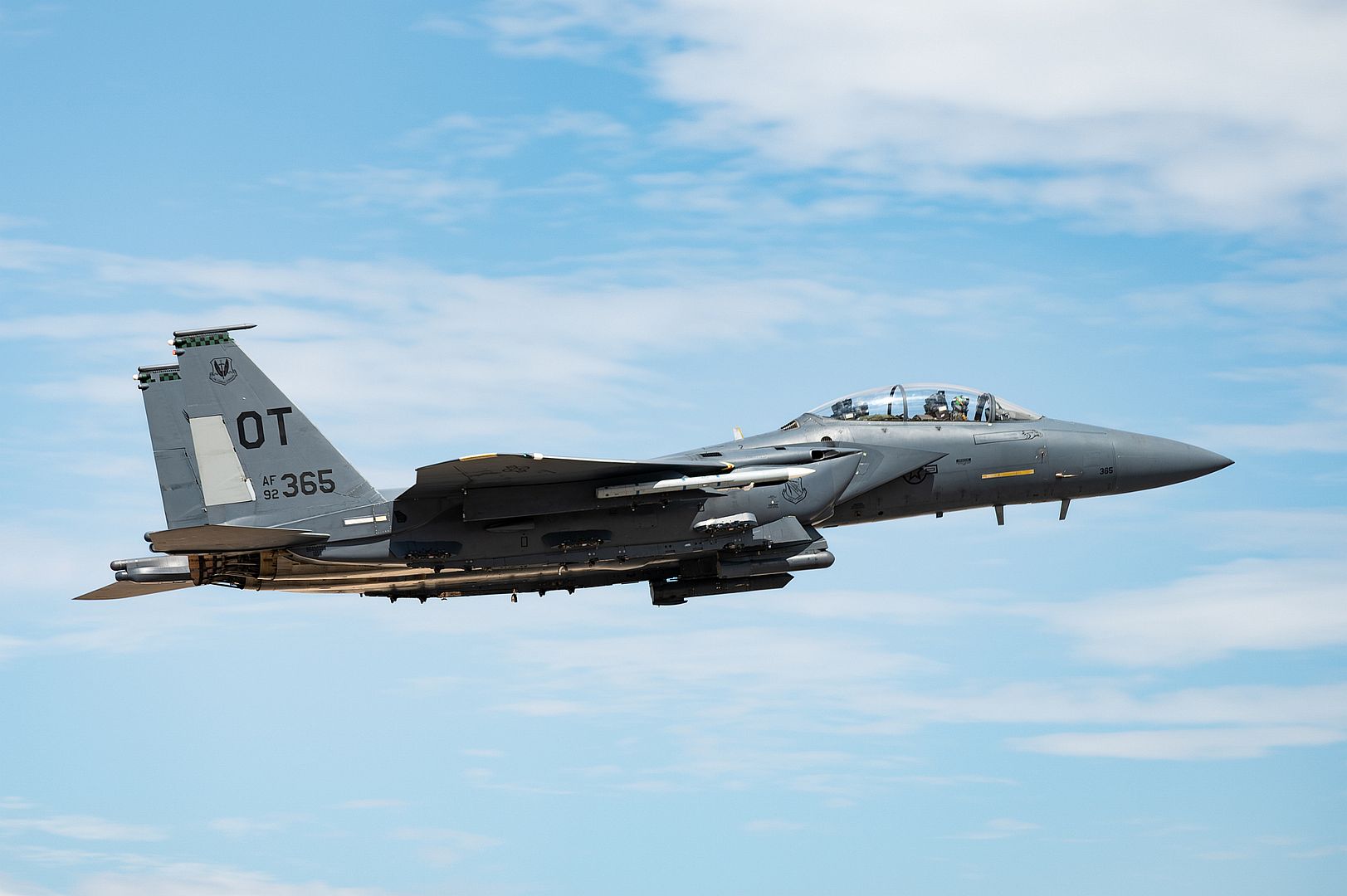
A U.S. Air Force F-16 Fighting Falcon assigned to the 64th Aggressor Squadron, comes in to land after a training mission at Nellis Air Force Base, Nevada, Aug. 26, 2025. The Aggressors emulate enemy tactics to sharpen warfighter skills and enhance air combat readiness across the force. (U.S. Air Force photo by Airman 1st Class Heather Amador)
U.S. Air Force Capt. Jacob Willenbrock, 14th Fighter Squadron F-16 Fighting Falcon pilot, and Senior Airman John Durkin, 13th Fighter Generation Squadron crew chief, complete pre-flight inspections before divestment at Misawa Air Base, Japan, Sept. 2, 2025. The 13th Fighter Squadron’s former aircraft are being relocated as part of a $10 billion modernization plan to strengthen the U.S.-Japan Alliance. The implementation of F-35 Lightning IIs in the place of F-16s provides the Misawa Air Base’s joint ground forces freedom from attack and freedom to maneuver while simultaneously holding the adversary’s most heavily defended targets at risk. (U.S. Air Force photo by Airman Hannah Bench)
Lt. Col Benjamin Gilliland, director, Air Dominance Combined Test Force, performs a lead change maneuver with Lt. Col Michael Coleman, director of staff, Air Force Test Pilot School, over the Mojave Desert near Edwards Air Force Base. The 412th Test Wing at Edwards continues to modernize the F-22 Raptor to meet current and future threats while maintaining air superiority. (Courtesy Photo)
WOOMERA, South Australia, Sept. 5, 2025 /PRNewswire(opens in a new tab)/ -- Boeing [NYSE: BA] and the Royal Australian Air Force (RAAF) have successfully completed demonstrations proving the operational viability of the MQ-28 Ghost Bat Collaborative Combat Aircraft (CCA).
The RAAF-defined demonstrations required the MQ-28 to execute a series of operationally relevant missions designed to supplement and enhance capabilities of existing crewed platforms.
The uncrewed MQ-28 platforms and digital versions have now completed 150 hours and 20,000+ hours of virtual testing. (Boeing photo)
The uncrewed MQ-28 platforms and digital versions have now completed 150 hours and 20,000+ hours of virtual testing. The Capability Demonstration 2025 missions were completed in early June, four months ahead of schedule, and validated:
autonomous behaviours and mission execution
multi-ship operations to provide combat mass
deployment operations to RAAF Base Tindal
teaming with an E-7A Wedgetail airborne early warning and control aircraft, and
data fusion and sharing data between multiple MQ-28 aircraft and transmission of that data to a crewed platform.
MQ-28 is a unique autonomous capability designed to complement the find, fix, track and target elements of air combat with autonomous behaviours and reduced risk to crewed platforms.
"The RAAF set the task of proving the first four steps in the Air Combat chain for the MQ-28 and we have accomplished that sooner than anticipated," said Glen Ferguson, MQ-28 Global program director.
"Completing this work early allows us to accelerate the next phases of development – engage and assess – with an air-to-air weapon shot planned for later this year or in early 2026.The demonstrations have proven the maturity of MQ-28's capabilities and the utility of CCA's and their application to the future force mix," Ferguson said.
The capabilities validated throughout 2025 will be incorporated into the Block 2 aircraft now in production, forming the basis of an initial operational capability for the RAAF and allied partners.
A leading global aerospace company and top U.S. exporter, Boeing develops, manufactures and services commercial airplanes, defense products and space systems for customers in more than 150 countries. Our U.S. and global workforce and supplier base drive innovation, economic opportunity, sustainability and community impact. Boeing is committed to fostering a culture based on our core values of safety, quality and integrity.
-
 Main AdminA U.S. Marine Corps F/A-18C Hornet aircraft with Marine Fighter Attack Squadron (VMFA) 232, Marine Aircraft Group 12, 1st Marine Aircraft Wing taxis the flight line at Marine Corps Air Station Iwakuni, Japan, Sep. 8, 2025. VMFA-232, an F-18 Hornet squadron from MCAS Miramar, California, deployed to augment MAG-12, 1st MAW under the Unit Deployment Program, which provides U.S.-based units with operational experience in the Indo-Pacific through continuous and overlapping deployments to the region. (U.S. Marine Corps photo by Lance Cpl. Erick Reyes)
Main AdminA U.S. Marine Corps F/A-18C Hornet aircraft with Marine Fighter Attack Squadron (VMFA) 232, Marine Aircraft Group 12, 1st Marine Aircraft Wing taxis the flight line at Marine Corps Air Station Iwakuni, Japan, Sep. 8, 2025. VMFA-232, an F-18 Hornet squadron from MCAS Miramar, California, deployed to augment MAG-12, 1st MAW under the Unit Deployment Program, which provides U.S.-based units with operational experience in the Indo-Pacific through continuous and overlapping deployments to the region. (U.S. Marine Corps photo by Lance Cpl. Erick Reyes)
U.S. Air Force Col. Daniel Wittmer, commander of the Air National Guard Air Force Reserve Command Test Center, delivers remarks during a ribbon cutting ceremony for the newly created AATC KC-46 Combined Test Center at Pease Air National Guard Base, New Hampshire, Sept. 5, 2025. The milestone established the 157th ARW and the AATC as key players in testing and fielding advanced capabilities for the KC-46A. (U.S. Air National Guard photo by Senior Master Sgt. Timm Huffman)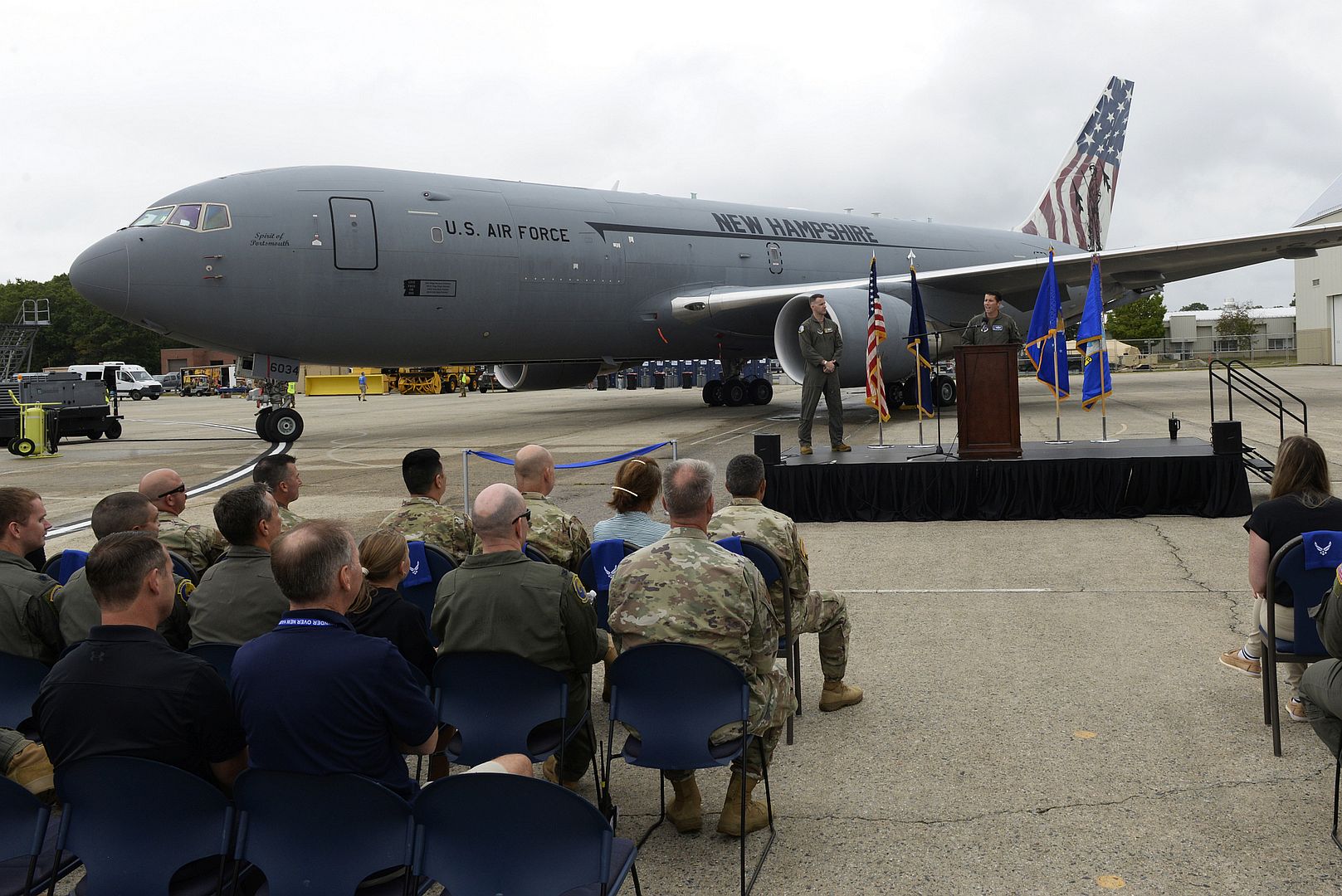
An A-10 Thunderbolt II and an F-35 Lightning II sit nose-to-nose outside Hangar 4 during the 924th Fighter Group inactivation ceremony Sept. 6, 2025, at Davis-Monthan Air Force Base, Ariz. The display symbolized the transition from the A-10 era to the future of the 47th Fighter Squadron in the F-35. (U.S. Air Force photo by Tech. Sgt. Tyler J. Bolken)
An F-16C assigned to the 416th Flight Test Squadron at Edwards Air Force Base, California, performs a training sortie over the Mojave Desert. (Air Force Photo by Christian Raterman)
D.C. Air National Guardsmen with the 113th Maintenance Group prepare F-16 Fighting Falcons for launch as part of exercise Bamboo Eagle, Aug 6, 2025, on Nellis Air Force Base, Nevada. Bamboo Eagle is an exercise in managing those threats by practicing Agile Combat Employment, increasing the understanding of the threat for Airmen at every level, and maturing command and control to support sustained combat sortie production in contested environments. (U.S. Air National Guard photo by Staff Sgt. Natalie Filzen)
An F-16C Fighting Falcon with the F-16 Demo Team performs an aerial demonstration over Rickenbacker Air National Guard Base, Ohio, as part of the Columbus Airshow, August 24, 2025. This year’s event featured more than 20 military and civilian planes, including a KC-135 Stratotanker from the 121st Air Refueling Wing, which served as the base of operations for military aircraft participating in the show. (U.S. Air National Guard photo by Airman Taylor Warehime)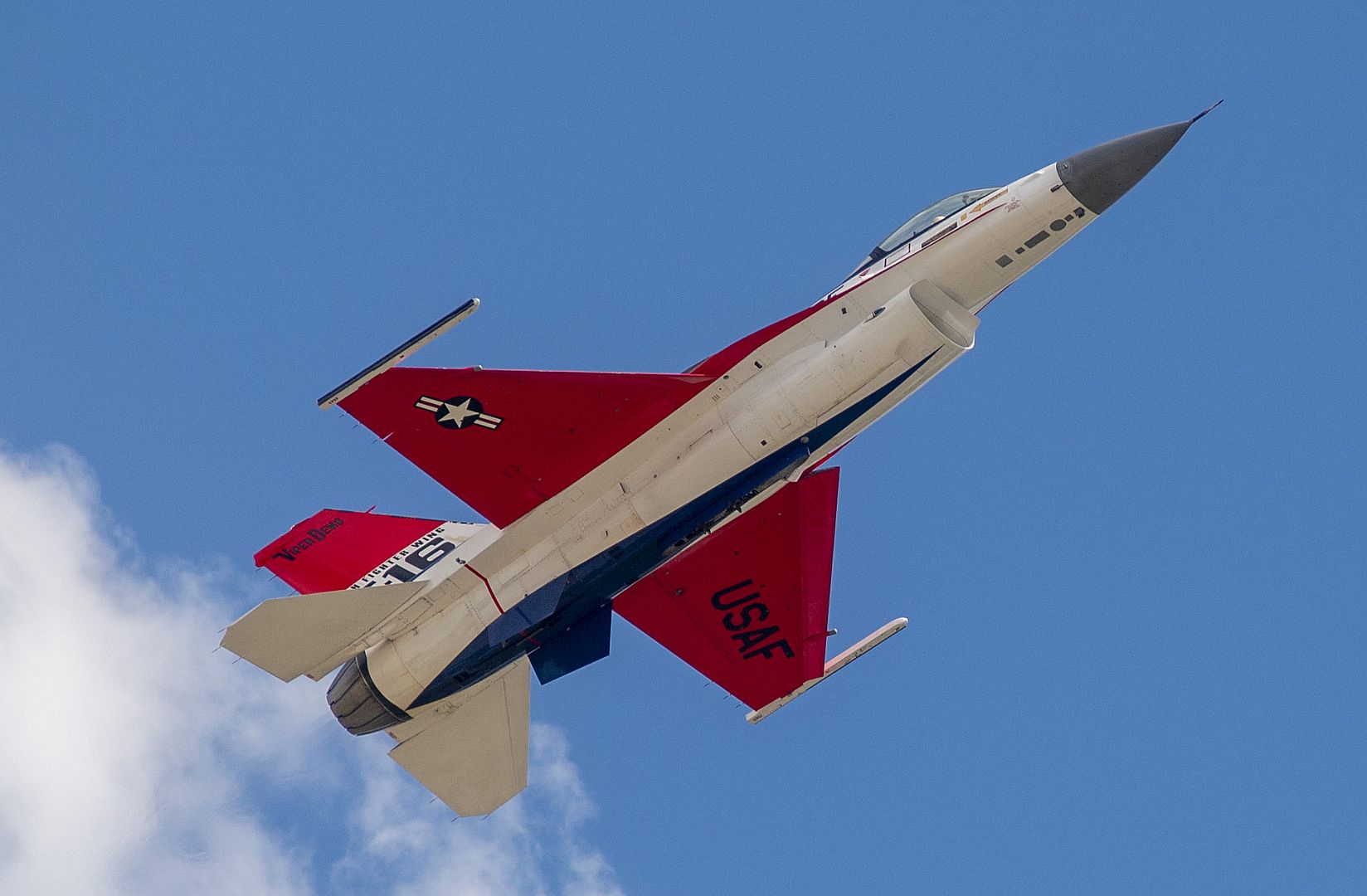
Back to business…
After receptions, think tank forums, ceremonies and enjoying the high life of one of the world’s great cities, the core business of military operations have resumed on the UK’s flagship HMS Prince of Wales and her Carrier Strike Group.
It's been working in the Sea of Japan with F-35As and F-15 Eagles from the Japanese Air Self-Defence Force, as well as practising firefighting and emergency /casualty responses.
(Photo courtesy of the RN)
-
 Main AdminAn F-15E Strike Eagle from Kadena Air Base, Japan, arrives in support of Exercise Cope West 25 at Roesmin Nurjadin Air Force Base, Indonesia, Sept. 7, 2025. CW25 is a bilateral tactical fighter exercise where U.S. and Indonesian forces work together to promote interoperability. (U.S. Air Force photo by Staff Sgt. Jasmine M. Barnes)
Main AdminAn F-15E Strike Eagle from Kadena Air Base, Japan, arrives in support of Exercise Cope West 25 at Roesmin Nurjadin Air Force Base, Indonesia, Sept. 7, 2025. CW25 is a bilateral tactical fighter exercise where U.S. and Indonesian forces work together to promote interoperability. (U.S. Air Force photo by Staff Sgt. Jasmine M. Barnes)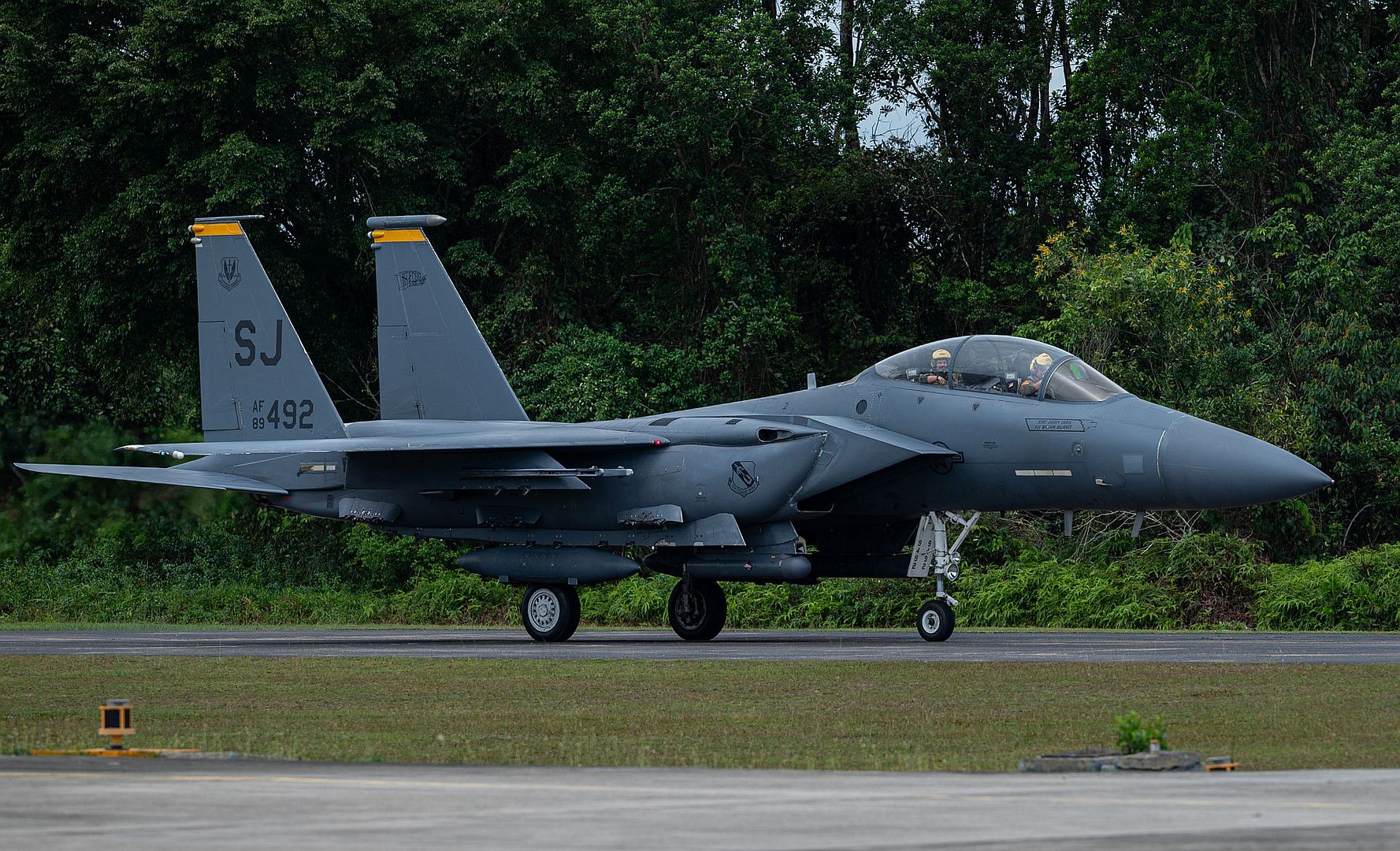
F-16 Fighting Falcons assigned to the 36th Fighter Squadron arrive at Cheongju Air Base, Republic of Korea for Buddy Squadron 25-5, Sept. 8, 2025. Buddy Squadron is a unique recurring bilateral exercise held several times a year across the Peninsula that strengthens integration between U.S. Air Force and ROKAF forces. (U.S. Air Force photo by Staff Sgt. Dustin Braaten)
A B-52H Stratofortress is parked on the flight line at Minot Air Force Base, North Dakota, Sept. 8, 2025. During Warbird Week, units across the 5th Bomb Wing face a series of scenarios designed to assess their ability to generate combat air power, sustain mission operations and respond to unforeseen obstacles. (U.S. Air Force photo by Airman 1st Class Wesley Davies)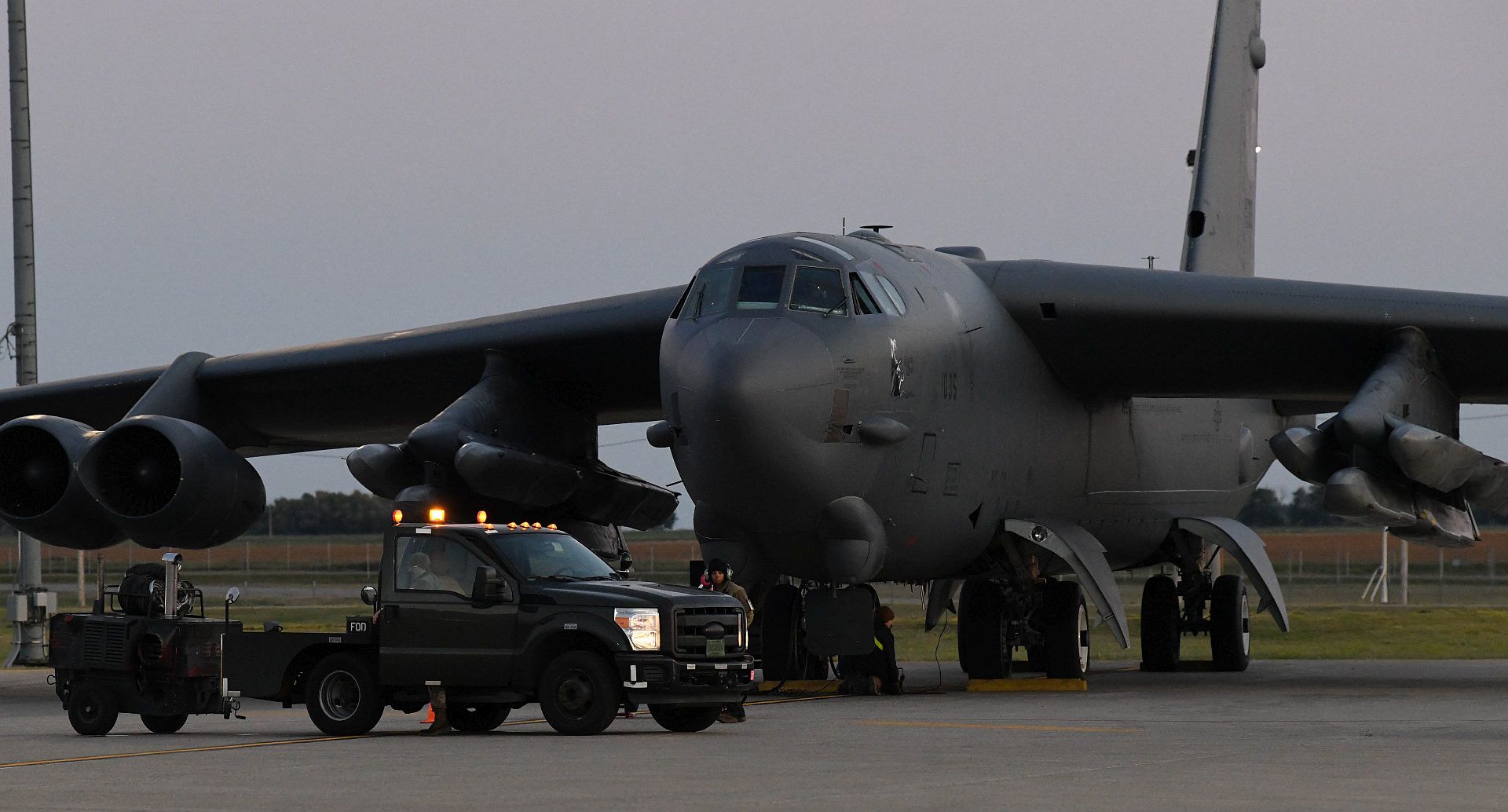
A U.S. Air Force F-22 Raptor assigned to the 422nd Test and Evaluation Squadron at Nellis Air Force Base, Nevada, prepares to taxi on the flightline during Weapons System Evaluation Program 25.09 at Tyndall Air Force Base, Florida, Sep. 8, 2025. WSEP provides a unique training experience within the U.S. military that benefits a multitude of mission sets. WSEP is one of the only military exercises that provides the opportunity for F-22 Raptors to practice with live-fire munitions. (U.S. Air Force photo by Airman 1st Class Zeeshan Naeem)
A U.S. Air Force F-35A Lightning II assigned to the 95th Fighter Squadron flies during Weapons System Evaluation Program 25.09 over Tyndall Air Force Base, Florida, Sep. 8, 2025. WSEP provides a unique training experience within the U.S. military that benefits a multitude of mission sets. Additionally, WSEP is one of the only military exercises that provides the opportunity for F-22 Raptors to practice with live fire. (U.S. Air Force photo by Airman 1st Class Zeeshan Naeem)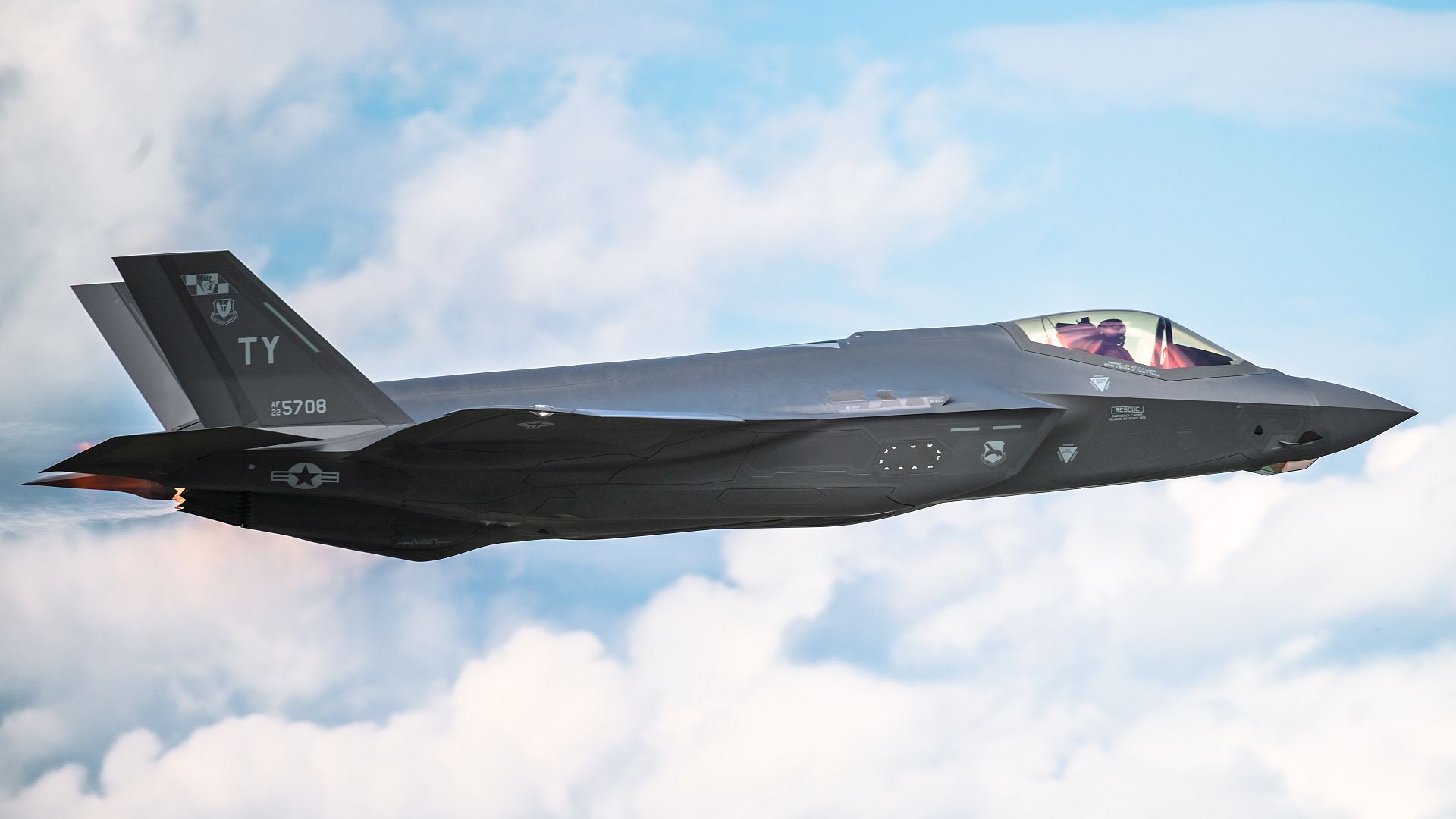
An Egyptian F-16 Fighting Falcon approaches a USAF KC-135 Stratotanker during BRIGHT STAR 25 in Egypt, Sept. 6, 2025. Our enduring partnership not only bolsters regional stability but also creates the conditions necessary for sustained economic growth, development, and peace, benefiting all nations in the region. (U.S. Air Force photo by Senior Airman Natalie Jones)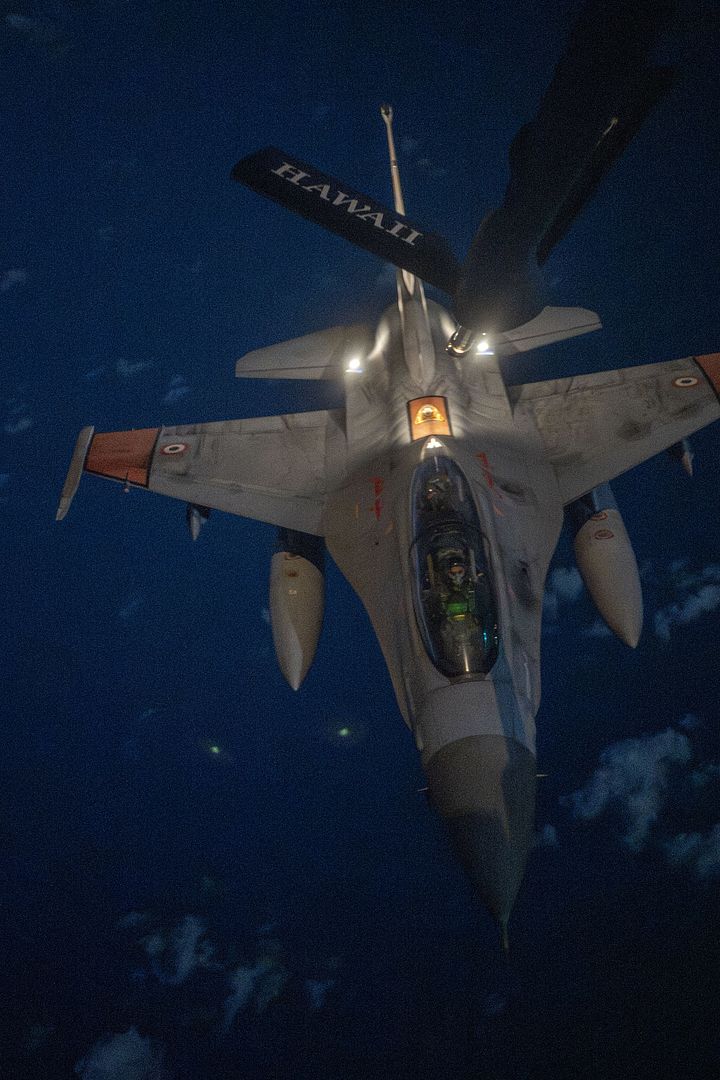
A C-17 assigned to the 911th Airlift Wing at Pittsburgh Air Reserve Station comes to a stop on the southern edge of Rogers Dry Lake at Edwards AFB, CA August 19, 2025. The vast dry lakebeds of Edwards provide the idea environment for practice in landing on unimproved surfaces, a skill needed by all C-17 crews. (Air Force photo by Todd Schannuth)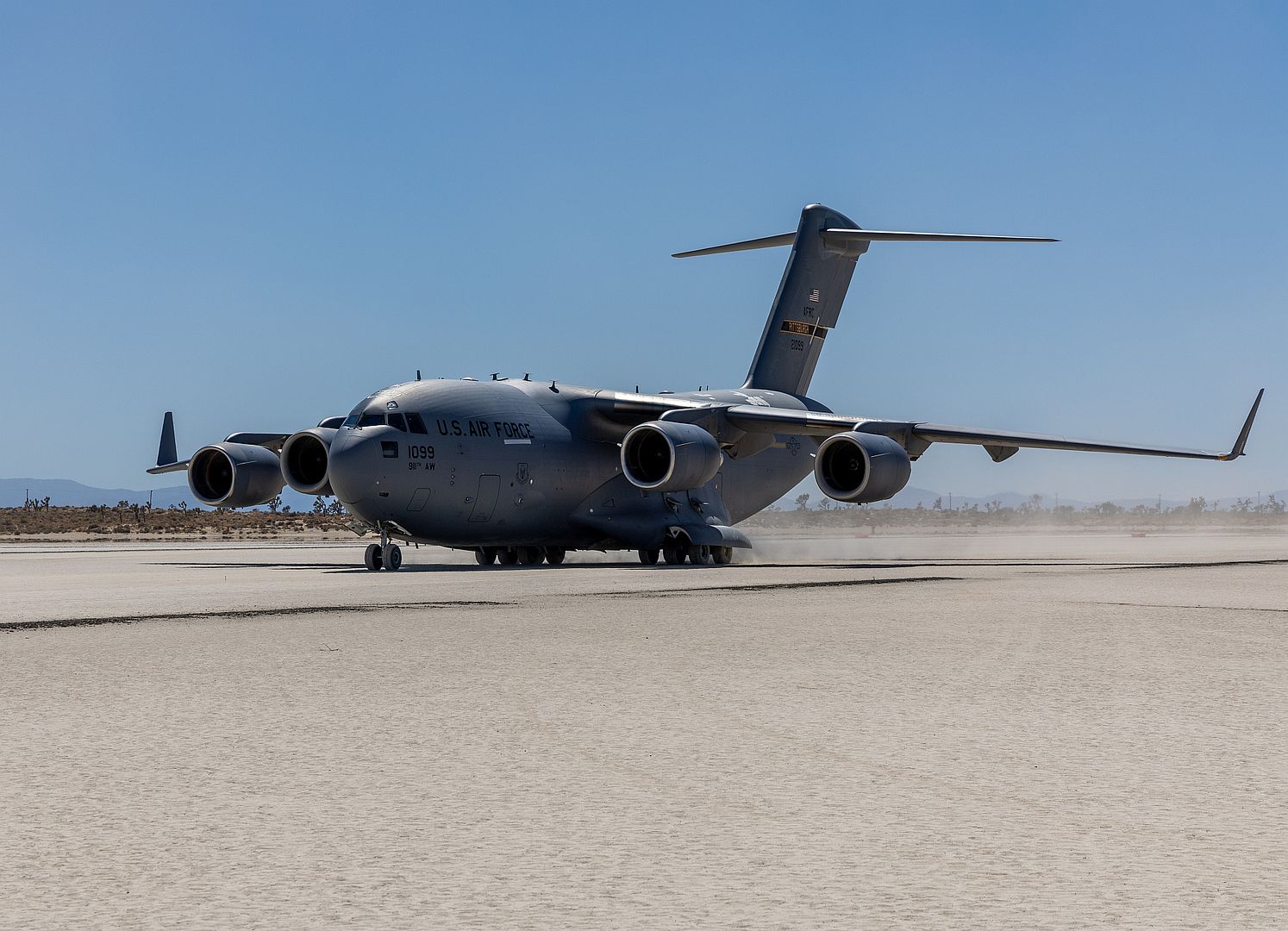
An F-22 Raptor executes the Hoover Pitch during an aerial demonstration at Marine Corps Air Station Kaneohe Bay, Hawaii, Aug. 8, 2025. Named after legendary Air Force test pilot Bob Hoover, the maneuver showcases the thrust-vectoring capability and unmatched agility of the fifth-generation fighter. (U.S. Air Force photo by Staff Sgt. Lauren Cobin)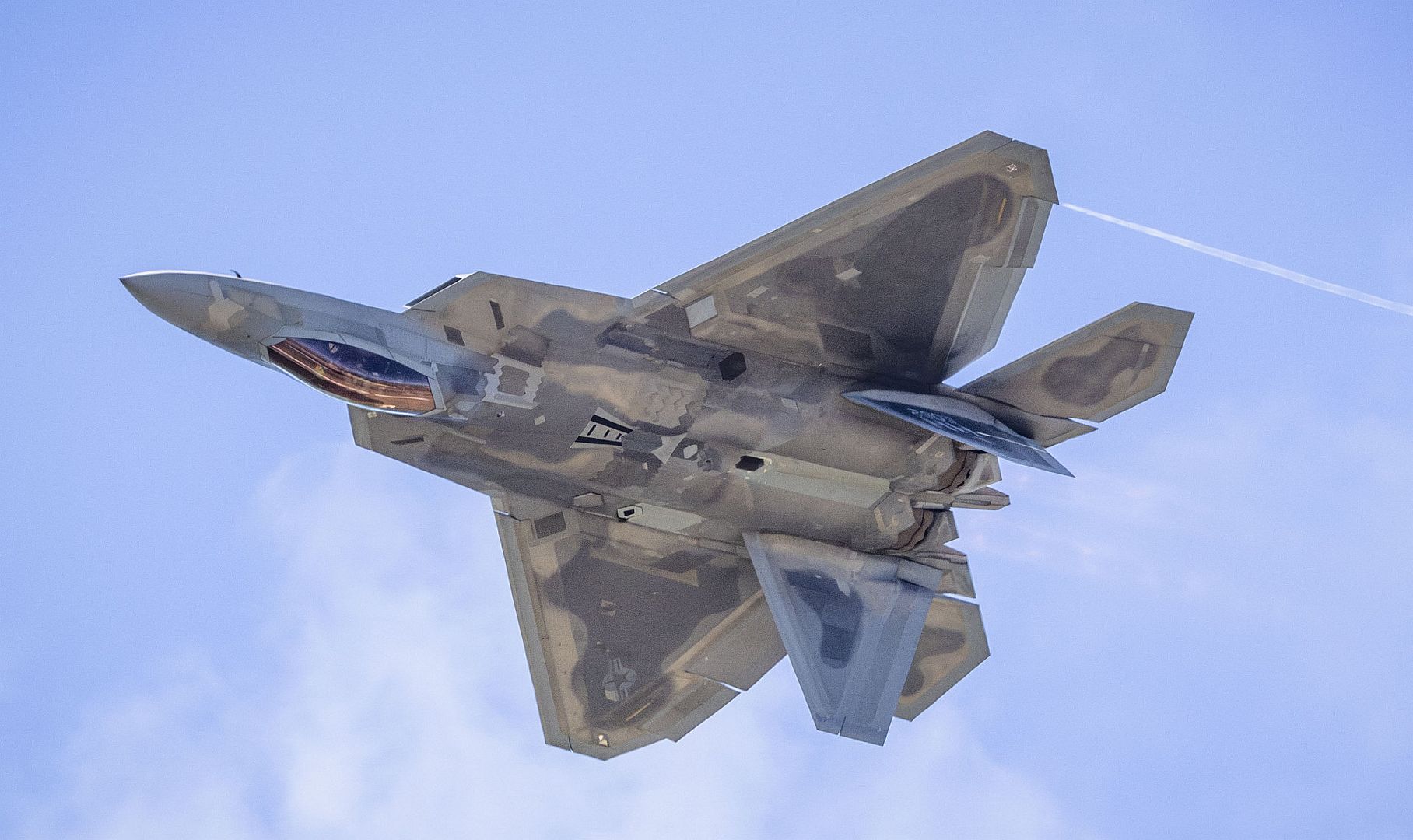
LONDON, Sept. 9, 2025 /PRNewswire/ -- Lockheed Martin Skunk Works® (NYSE: LMT) and BAE Systems FalconWorks (LSE: BAES) announced a strategic partnership at DSEI global defence conference in the United Kingdom, to develop a range of uncrewed autonomous air systems. The collaboration will see their advanced research and development divisions – Lockheed Martin Skunk Works and BAE Systems' FalconWorks – work together on a common design that will be rapidly deployable and modular to deliver a range of effects, including disruptive capabilities.
Drawing on both organisations' rapid design, prototyping and advanced manufacturing expertise, the collaboration will focus on producing a cost-effective and easily deployable system with multiple launch options. It will initially focus on delivering an electronic warfare and attack capability that would deliver disruptive capabilities and could complement and enhance the survivability of current crewed combat aircraft.
The initial system will be designed with modularity and adaptability for different missions, and offer multiple launch options such as air drop, ground launch, maritime launch and launch from a wide-body logistic aircraft.
The announcement comes at a time when nations are increasingly looking towards developing a mix of crewed and uncrewed assets to address the requirements of today's rapidly evolving battlespace – and the need to be able to quickly develop and field affordable 'combat mass' to support existing frontline combat platforms.
"We're pleased to join forces with BAE Systems, combining our expertise in rapid prototyping and advanced development to deliver game-changing capabilities," said OJ Sanchez, vice president and general manager, Lockheed Martin Skunk Works. "By working together, we're unlocking new possibilities for our customers and advancing the future of autonomous systems."
Dave Holmes, managing director of BAE Systems' FalconWorks division, said: "Through our collaboration with Lockheed Martin we'll deliver disruptive capabilities that can make a real difference to our military customers at pace, enabling them to confront the operational requirements of today's battlefield."
About Lockheed Martin
Lockheed Martin is a global defense technology company driving innovation and advancing scientific discovery. Our all-domain mission solutions and 21st Century Security® vision accelerate the delivery of transformative technologies to ensure those we serve always stay ahead of ready. More information at Lockheedmartin.com.
About BAE
BAE Systems is a global defence, security, and aerospace company that delivers a range of products and services for air, land, and naval forces, as well as advanced electronics, security, information technology solutions, and customer support services. More information at baesystems.com.
The import-substituting SJ-100 aircraft with the number 97004, built using serial technologies at the Production Center of the Regional Aircraft Branch (RAB) of PJSC Yakovlev (part of the UAC of the Rostec State Corporation), took off from the factory airfield in Komsomolsk-on-Amur. The aircraft is equipped with Russian systems and units, including PD-8 engines manufactured by UEC.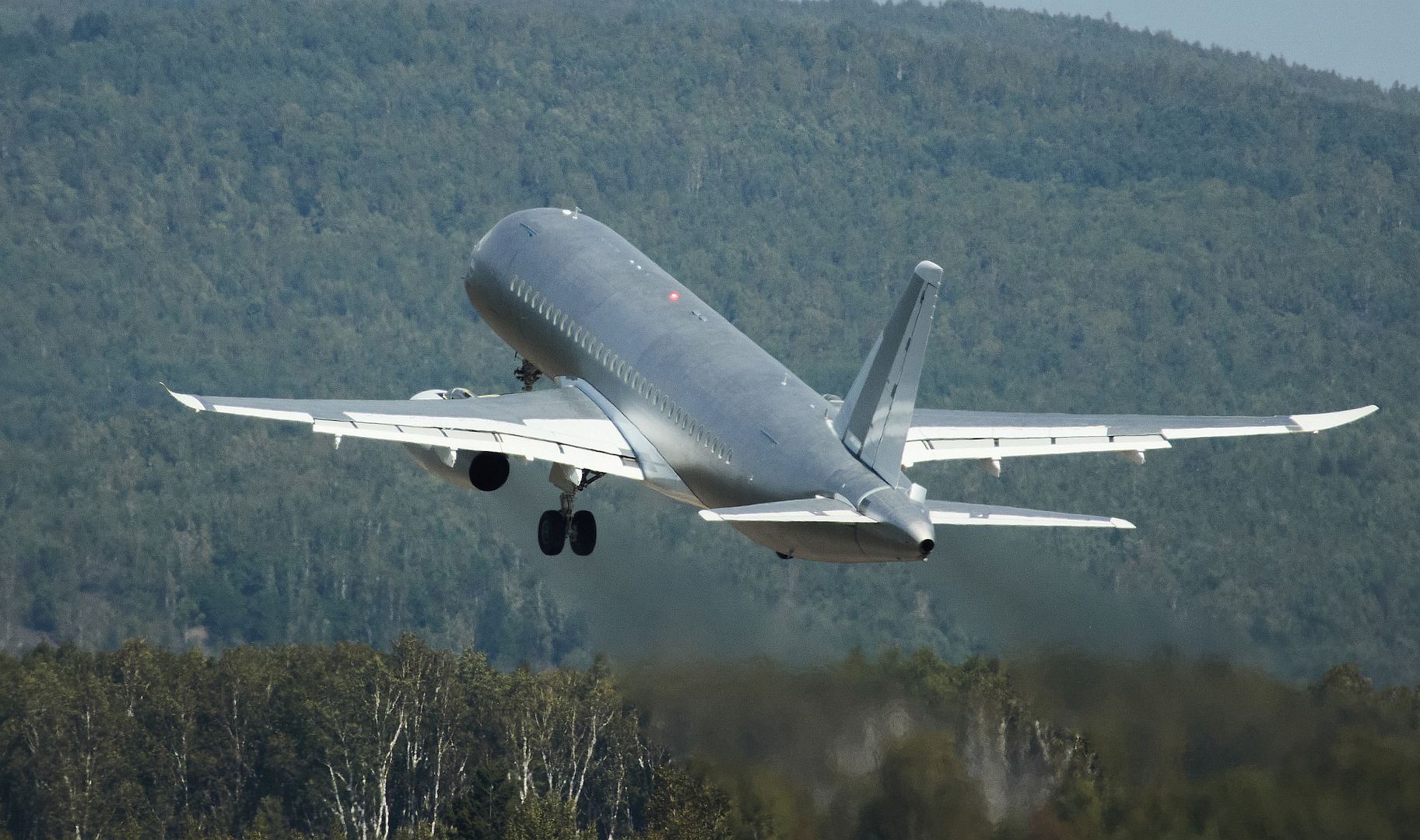
The first flight lasted about an hour. The aircraft was piloted by the crew of the Flight Test Complex of the Federal Research Service, consisting of test pilots Dmitry Savonin, Leonid Chikunov and the lead flight test engineer - flight operator Vladislav Tyurin.
The first aircraft built using serial technologies took to the air. The certification process is still ongoing, but the aircraft was created in serial production, in the target form, which is planned for delivery.
-
 Main AdminA U.S. Air Force C-17 Globemaster III lands on the flight line as a C-130 Hercules prepares for takeoff within the U.S. Central Command area of responsibility, Sept. 5, 2025. The C-17 enables rapid delivery of humanitarian aid worldwide, with short-runway capability ensuring relief reaches even the hardest-hit areas, such as the recent flooding in Pakistan. (U.S. Air Force photo by Staff Sgt. James Fritz)
Main AdminA U.S. Air Force C-17 Globemaster III lands on the flight line as a C-130 Hercules prepares for takeoff within the U.S. Central Command area of responsibility, Sept. 5, 2025. The C-17 enables rapid delivery of humanitarian aid worldwide, with short-runway capability ensuring relief reaches even the hardest-hit areas, such as the recent flooding in Pakistan. (U.S. Air Force photo by Staff Sgt. James Fritz)
Washington D.C., United States of America – September 10, 2025 – Avelo Airlines has placed a firm order for 50 Embraer (NYSE: ERJ; B3: EMBR3) E195‑E2 aircraft, with purchase rights for 50 more, supporting the airline’s strategy to deliver affordable and convenient travel across the United States. Aircraft deliveries are expected to begin in the first half of 2027. The list-price value of the order is US$4.4 billion, excluding purchase rights.
Avelo will be the first U.S. carrier to operate Embraer’s largest and most advanced commercial aircraft, making this a significant milestone for Embraer’s flagship E2 program. The E195‑E2s will modernize Avelo’s fleet, complementing its Boeing 737NGs for the foreseeable future while improving cost efficiency and network reach.
The E2’s excellent short-field performance, enabled by E2TS (Embraer Enhanced Takeoff System), Embraer’s first of its kind proprietary technology, is a key capability that will open new markets for Avelo and drive efficiency in many of Avelo’s existing airports. This, along with the aircraft’s range, fuel efficiency, and small noise footprint establish it as the ideal aircraft to expand Avelo’s network.
Avelo Airlines Founder and CEO Andrew Levy said, “We are thrilled to partner with Embraer and bring this best-in-class small narrowbody airplane to the United States marketplace. Our customers will love the E2’s comfortable 2x2 seating, in-seat power ports, large overhead bins, and quiet cabin. The aircraft’s exceptional performance, size, and efficiency make it the perfect choice for the future growth of our scheduled service network. The airline industry in the United States is evolving, and the E2 fits perfectly with our vision for Avelo’s unique role in that evolution.”
“The E195‑E2 is a game‑changer for airlines that want to grow profitably while elevating the guest experience,” said Arjan Meijer, President and CEO, Embraer Commercial Aviation. “Avelo complements its narrowbody fleet with the best-in-class E195-E2. Its exceptional fuel efficiency, quiet operations, and short‑field capability will unlock new markets and optimize capacity across its network - all with a cabin that passengers truly love.”
About Avelo Airlines
Avelo Airlines’ purpose is to Inspire Travel by saving travelers time and money. The airline offers Customers safe, convenient travel, everyday low fares, and a caring travel experience. Avelo stands out as the leading U.S. airline in on-time performance and reliability. Since taking flight on April 28, 2021, Avelo has flown nearly eight million Customers on more than 62,000 flights on its fleet of 22 Boeing Next Generation 737 aircraft. Today Avelo serves 47 cities spanning 18 states and Puerto Rico, as well as three international destinations: Jamaica, Mexico, and the Dominican Republic. For more information visit AveloAir.com or the Avelo Newsroom at AveloAir.com/Newsroom.
-
 Main AdminA second B-21 Raider, the nation’s sixth-generation stealth bomber, joins flight testing at Edwards Air Force Base, Calif., Sept. 11, 2025. The program is a cornerstone of the Department of the Air Force’s nuclear modernization strategy, designed to deliver both conventional and nuclear payloads. (Courtesy photos)
Main AdminA second B-21 Raider, the nation’s sixth-generation stealth bomber, joins flight testing at Edwards Air Force Base, Calif., Sept. 11, 2025. The program is a cornerstone of the Department of the Air Force’s nuclear modernization strategy, designed to deliver both conventional and nuclear payloads. (Courtesy photos)
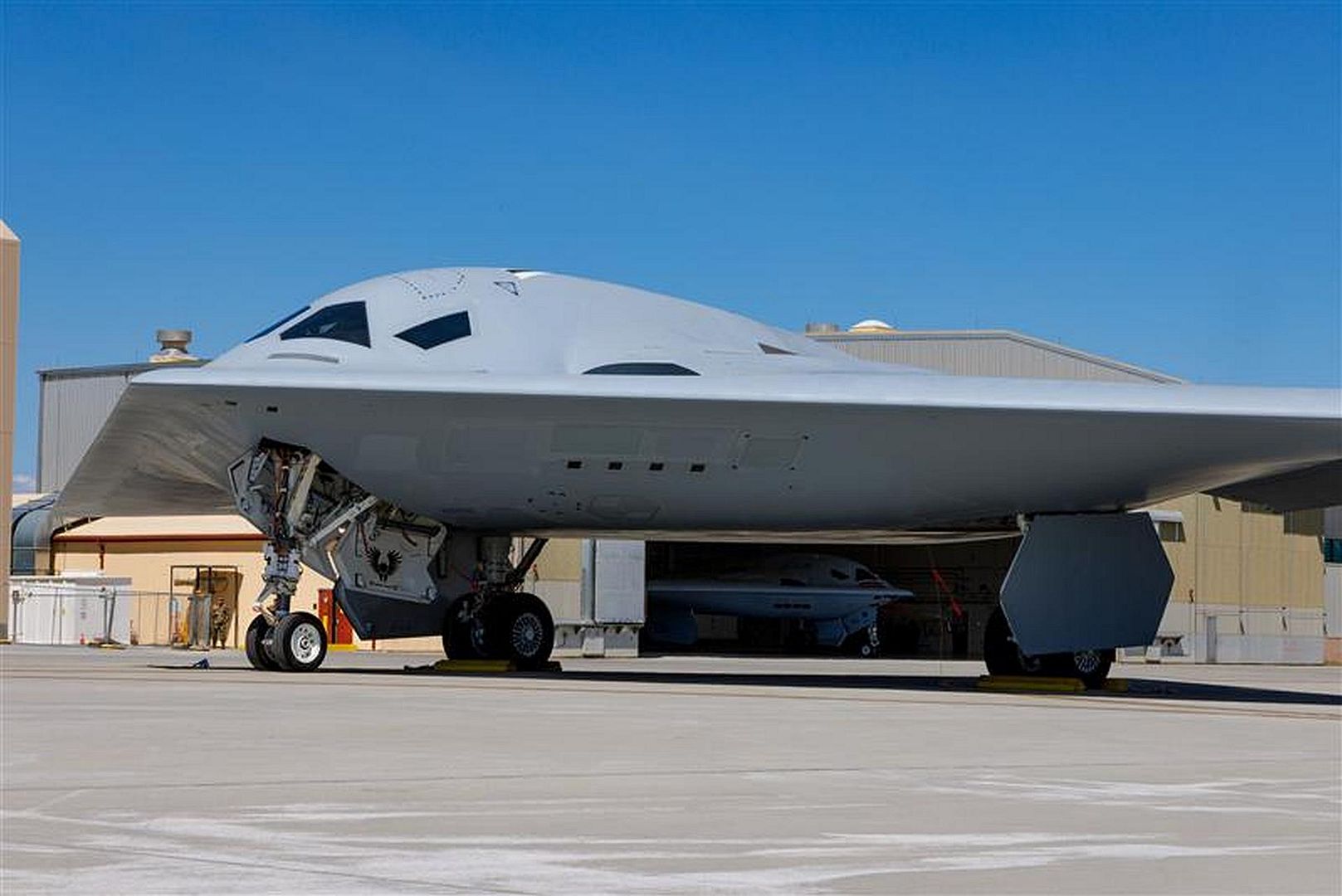
A second B-21 Raider test aircraft takes off, Sept. 11, from Palmdale, Calif., to join the Air Force’s flight test campaign at Edwards Air Force Base, Calif. The addition of the second test aircraft expands mission systems and weapons integration testing, advancing the program toward operational readiness. (Courtesy photo)
The North American B-25J Mitchell bomber 'Panchito' taxis on the tarmac at Joint Base Andrews, Maryland, Sept. 11, 2025. The World War II-era aircraft participated in the 2025 Joint Base Andrews Air Show to help educate audiences on America’s aviation history. (U.S. Air Force photo by Senior Airman Martha Moore)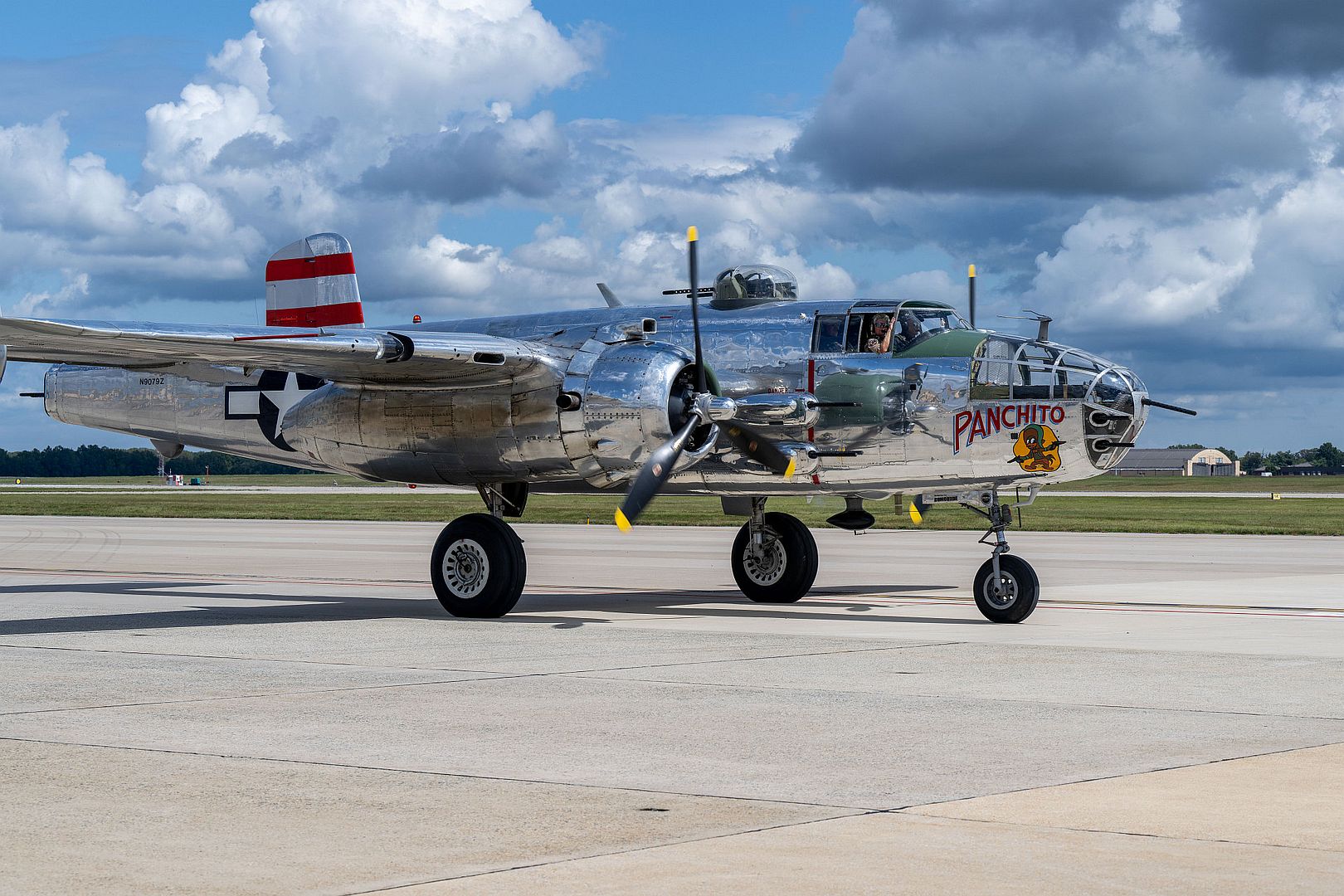
U.S. Air Force Airmen assigned to the 307th Bomb Wing perform post-flight maintenance on the tail section of a B-52H Stratofortress during Exercise Cobra Warrior 25-2 at RAF Fairford, England, Sept. 12, 2025. The aircraft arrived in support of Exercise Cobra Warrior 25-2, a multinational training event focused on developing tactical interoperability among NATO and partner nations. (U.S. Air Force photo by Staff. Sgt Tambri Cason)
A B-52H Stratofortress undergoing programmed depot maintenance is towed into a hangar at Tinker Air Force Base, Oklahoma, July 28, 2025. The aircraft’s extra-long wingspan is too wide for the hangar, so it “crabs” into the hangar diagonally. Representatives from Boeing were on hand for this towing to study how the Oklahoma City Air Logistics Complex moves the B-52 as the company prepares for Commercial Engine Replacement Program upgrades. (U.S. Air Force photo by Courtney Landsberger)
A U.S. Air Force F-16 Fighting Falcon assigned to the 64th Aggressor Squadron, Nellis Air Force Base (AFB), Nevada, takes off for a training mission at Nellis AFB, Sep. 4, 2025. Pilots from the 64th Aggressor Squadron refine threat replication, apply advanced threats and jamming capabilities and increase threat capabilities to maximize training in non-permissive environments. (U.S. Air Force photo by William R. Lewis)
A U.S. Air Force F-22 Raptor fighter jet assigned to the 422nd Test and Evaluation Squadron (TES), takes off for a mission at Nellis Air Force Base, Nevada, Sep. 4, 2025. The 422nd TES is a geographically separated unit of the 53rd Test and Evaluation Group, Eglin AFB, Florida. (U.S. Air Force photo by William R. Lewis)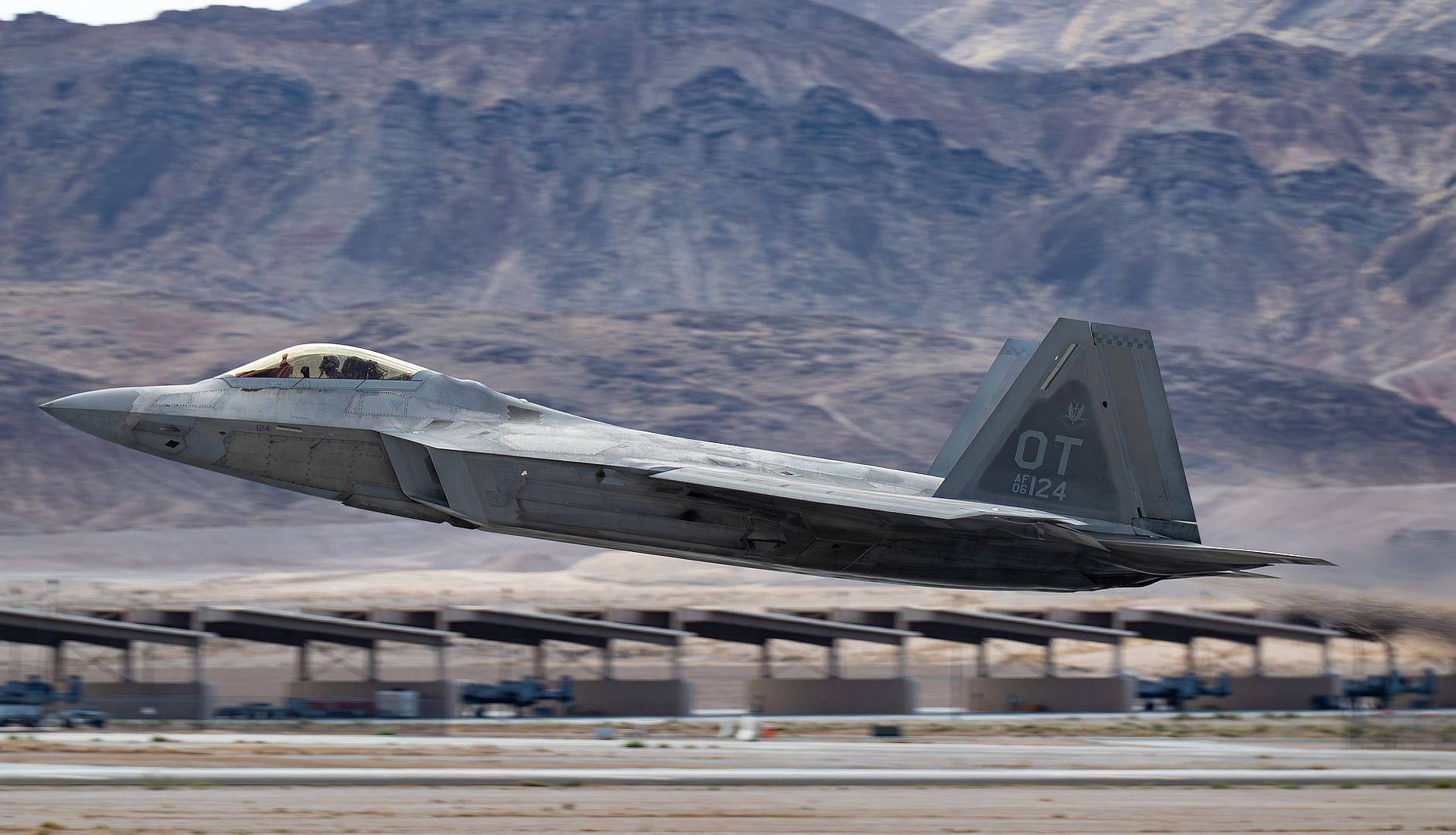
A U.S. Air Force F-16 Fighting Falcon assigned to the 706th Aggressor Squadron, Nellis Air Force Base (AFB), Nevada, takes off for a training mission at Nellis AFB, Sep. 4, 2025. The mission of the Aggressors is to prepare warfighters to win in air combat against any adversary. (U.S. Air Force photo by William R. Lewis)
A U.S. Air Force F-16 Fighting Falcon assigned to the 16th Weapons Squadron, U.S. Air Force Weapons School (USAFWS), takes off for a mission at Nellis AFB, Sep.4, 2025. The USAFWS teaches graduate-level instructor courses that provide the world’s most advanced training in weapons and tactics employment. (U.S. Air Force photo by William R. Lewis)
A U.S. Air Force F-16 Fighting Falcon assigned to the 64th Aggressor Squadron, Nellis Air Force Base (AFB), Nevada, takes off for a training mission at Nellis AFB, Sep. 4, 2025. The mission of the Aggressors is to prepare warfighters to win in air combat against any adversary. (U.S. Air Force photo by William R. Lewis)
A U.S. Air Force F-16 Fighting Falcon assigned to the 64th Aggressor Squadron, Nellis Air Force Base (AFB), Nevada, takes off for a training mission at Nellis AFB, Aug. 26, 2025. The mission of the Aggressors is to prepare warfighters to win in air combat against any adversary. (U.S. Air Force photo by William R. Lewis)
Two U.S. Air Force F-35A Lightning II’s from the 48th Fighter Wing at RAF Lakenheath, fly alongside a KC-135 Stratotanker from the 100th Air Refueling Wing after receiving fuel over the North Sea, Sept. 4, 2025. The F-35A is a fifth generation fighter that provides the joint warfighter unprecedented global precision attack capability against current and emerging threats, while complementing the Air Force’s air superiority fleet. (U.S. Air Force photo by Airman 1st Class Aidan Martínez)
Mirabel, Canada, 11 September 2025 – Air Niugini, the national carrier of Papua New Guinea, has taken delivery of its first A220-300 aircraft, on lease from Azorra. The airline becomes the 25th global operator of the A220, which is now flying with carriers on five continents.
The aircraft, dubbed "People's Balus", departed the Airbus Final Assembly Line in Mirabel for a delivery flight to Port Moresby, with scheduled stops in Vancouver, Honolulu and Fiji. The delivery represents a significant milestone in Air Niugini’s fleet modernisation programme, with eight A220-100s on direct order with Airbus and three A220-300s being leased from Azorra.
The aircraft’s special livery marks the 50th Anniversary of the Independence of Papua New Guinea. The intricate design was brought to life by a dedicated Airbus team of 120 painters who worked to apply 11 distinct colours using a special airbrushing technique.
This delivery highlights the A220’s strong position in its segment, combining the longest range (6,700km) with the lowest fuel consumption in its class, - 25% less than previous-generation aircraft. The A220-100, which serves the 100-135 seat market, is a crucial component of this modern airliner family, while the larger A220-300 is tailored for the 120-160 seat segment. This Air Niugini A220-300 is configured to accommodate a total of 138 passengers, a testament to its flexibility and suitability for the carrier's network.
The A220 is poised to become the centrepiece of the airline's regional and international fleet, providing a new level of operational efficiency and passenger comfort. Its unmatched efficiency, coupled with a spacious cabin and the range to connect various destinations, positions it as an exemplary fit for the carrier's network and its overarching objectives for long-term growth.
The airframe integrates 40% advanced materials, resulting in a lighter-weight aircraft. The A220 also incorporates optimised aerodynamics with a newly designed nose and tail cone, both of which contribute to reducing drag. In fact, the A220 has the smallest fuselage wetted area -the surface directly in contact with the air- in its class.
The A220 is powered by Pratt & Whitney’s latest-generation GTF™ engines, offering a 25% reduction in carbon emissions per seat compared with previous-generation aircraft. As with all Airbus aircraft, the A220 is already able to operate with up to 50% Sustainable Aviation Fuel (SAF), with a target for all aircraft to be capable of operating with up to 100% SAF by 2030.
As of the end of August 2025, Airbus has secured more than 940 orders for the A220 from over 30 customers, and has delivered over 440 aircraft. The A220 is already flying on more than 1,800 routes to more than 480 destinations worldwide, confirming its leading position in the small single-aisle market.
The first C909 medical rescue aircraft was delivered to China Flying Dragon General Aviation Co., Ltd. (hereinafter referred to as "China Flying Dragon General Aviation") in Zhengzhou, Henan Province on September 9th, 2025, marking a new expansion in the serial development of China-made commercial aircraft. After delivery, the aircraft would be put into service for emergency rescue, telemedicine and critical care transfer.
The C909 medical rescue aircraft has a maximum design payload of 10 tons and a standard range of up to 3,700 kilometers, and is capable of taking off and landing at high plateau airports. The cabin layout of the aircraft can be flexibly modified according to different rescue needs, which can meet the requirements of various application scenarios including transporting medical teams, providing remote-area assistance and transferring patients.
China Flying Dragon General Aviation is China's first local general aviation company approved by the Civil Aviation Administration of China (CAAC). It is affiliated to Zhongyu Aviation Group Co., Ltd. Its business covers multiple fields such as aviation emergency rescue, police flights, geophysical surveying and mapping, and short haul transportation. It has long been responsible for air support tasks for major national events and emergencies. As the first user of C909 medical rescue aircraft, China Flying Dragon General Aviation will rely on its rich emergency rescue experience and operation system to explore the establishment of a nationwide aviation medical rescue network, and will expand air medical services along the "Belt and Road" to gradually form a development mode that is domestically based, has a regional coverage, and extends to the international market.
Aviation medical care utilizes aircraft to provide medical rescue, medical transfer and other services, and has the characteristics of fast response, wide rescue range and high rescue efficiency. The delivery of the C909 medical rescue aircraft will provide a new option for improving the domestic air medical support system and enhancing emergency response capabilities.
SAN DIEGO – 10 September 2025 – General Atomics Aeronautical Systems, Inc. (GA-ASI) and AeroVironment (“AV”) (NASDAQ: AVAV) collaborated on the air launch of a Switchblade 600 loitering munition (LM) from a GA-ASI Block 5 MQ-9A unmanned aircraft system (UAS). The flight testing took place from July 22-24 at the U.S. Army Yuma Proving Grounds Test Range. It marked the first time a Switchblade 600 has ever been launched from an unmanned aircraft.
“This cooperative effort showcased how combining different unmanned technologies could really provide value and effects to the warfighter,” said GA-ASI President David R. Alexander. “By using MQ-9A to carry the Switchblade, the MQ-9A is able to stand off farther from enemy weapons systems and increase the range of the SB600, which will provide greater access and options in contested airspace.”
After successfully integrating the SB600 with the MQ-9A, the team released two LMs: one with an inert warhead and the other with a high-explosive round. After launch, the team transferred control of the Switchblade from a user in the MQ-9A’s ground control station to a user on the ground nearer the operational area.
The test further validated GA-ASI’s ability to integrate and operate a variety of airborne launched effects on the battlefield – including both those built by GA-ASI and by partners such as AV – and how their use in conflict provides risk-tolerant options to commanders in contested operations.
About GA-ASI
General Atomics Aeronautical Systems, Inc., is the world’s foremost builder of Unmanned Aircraft Systems (UAS). Logging more than 8 million flight hours, the Predator® line of UAS has flown for over 30 years and includes MQ-9A Reaper®, MQ-1C Gray Eagle®, MQ-20 Avenger®, and MQ-9B SkyGuardian®/SeaGuardian®. The company is dedicated to providing long-endurance, multi-mission solutions that deliver persistent situational awareness and rapid strike.
For more information, visit www.ga-asi.com
The 312th Fighter Squadron has officially surpassed 1,000 flight hours on the F-35.
This symbolic milestone marks a significant step in the squadron's further development.
The result reflects the intensity of training since the arrival of the first aircraft at Luke Air Force Base, as well as the growing expertise of our Belgian pilots and technicians.
This progress is part of the preparations for the imminent arrival of the F-35 in Belgium and represents a key moment in the capability transformation of our Air Force, in close collaboration with international partners.
(Photo courtesy of the Belgian Air Force)
From different bases across Europe, NATO Allies are securing the skies over NATO territory.
(Photo courtesy of Allied Joint Force Command Brunssum)
Post a reply
- Go to Previous topic
- Go to Next topic
- Go to Welcome
- Go to Introduce Yourself
- Go to General Discussion
- Go to Screenshots, Images and Videos
- Go to Off topic
- Go to Works in Progress
- Go to Skinning Tips / Tutorials
- Go to Skin Requests
- Go to IJAAF Library
- Go to Luftwaffe Library
- Go to RAF Library
- Go to USAAF / USN Library
- Go to Misc Library
- Go to The Ops Room
- Go to Made in Germany
- Go to Campaigns and Missions
- Go to Works in Progress
- Go to Juri's Air-Raid Shelter
- Go to Campaigns and Missions
- Go to Works in Progress
- Go to Skinpacks
- Go to External Projects Discussion
- Go to Books & Resources
